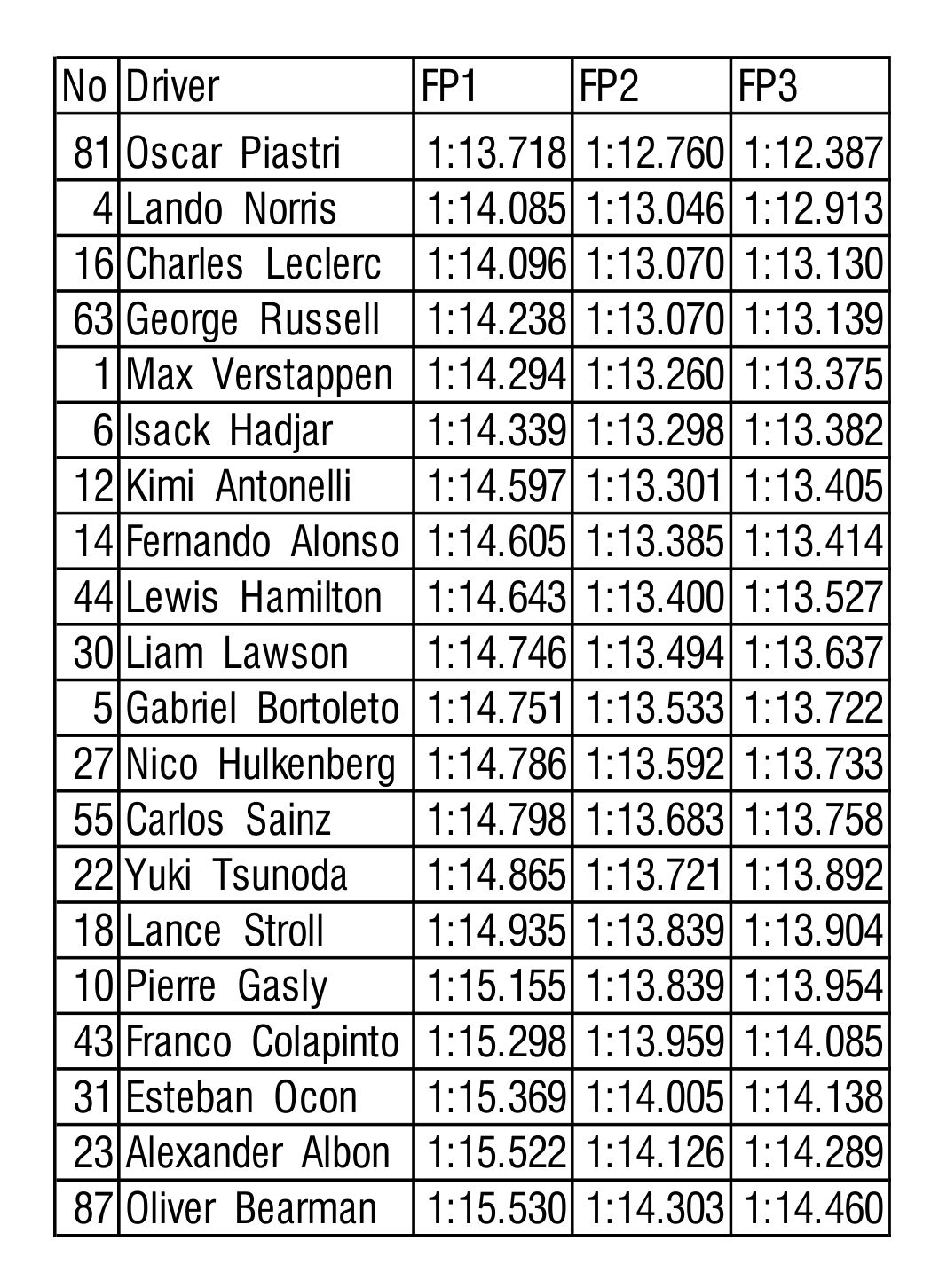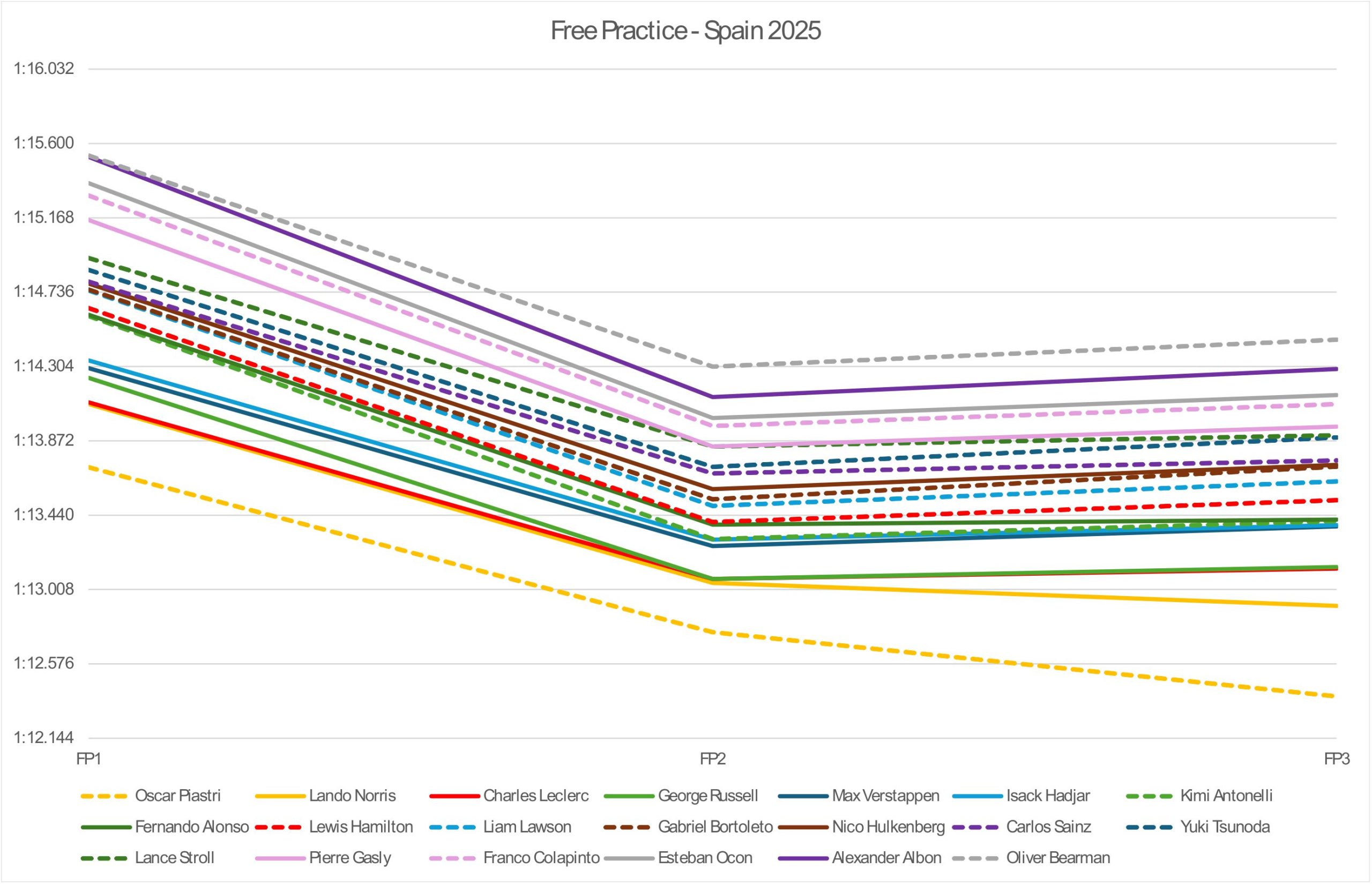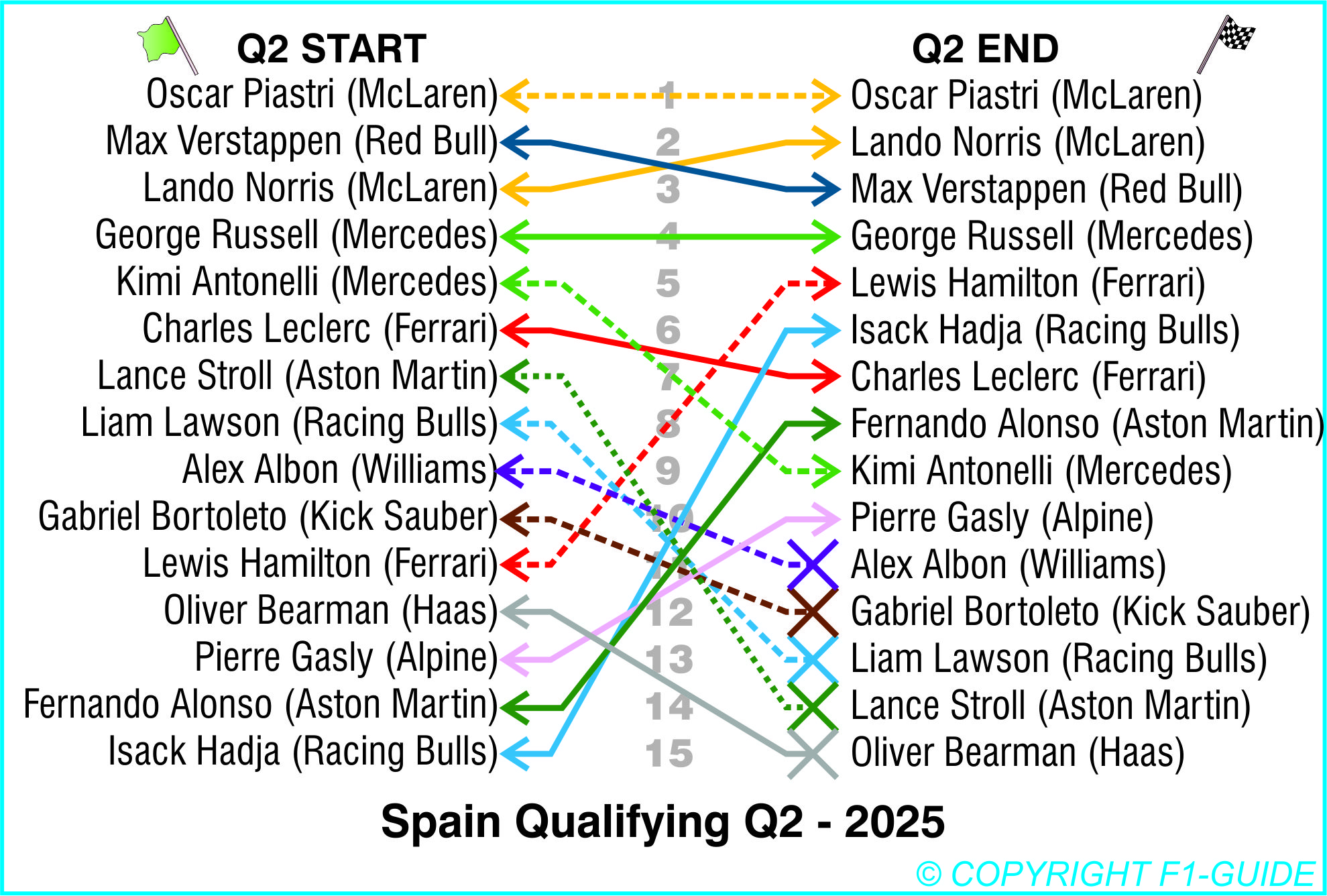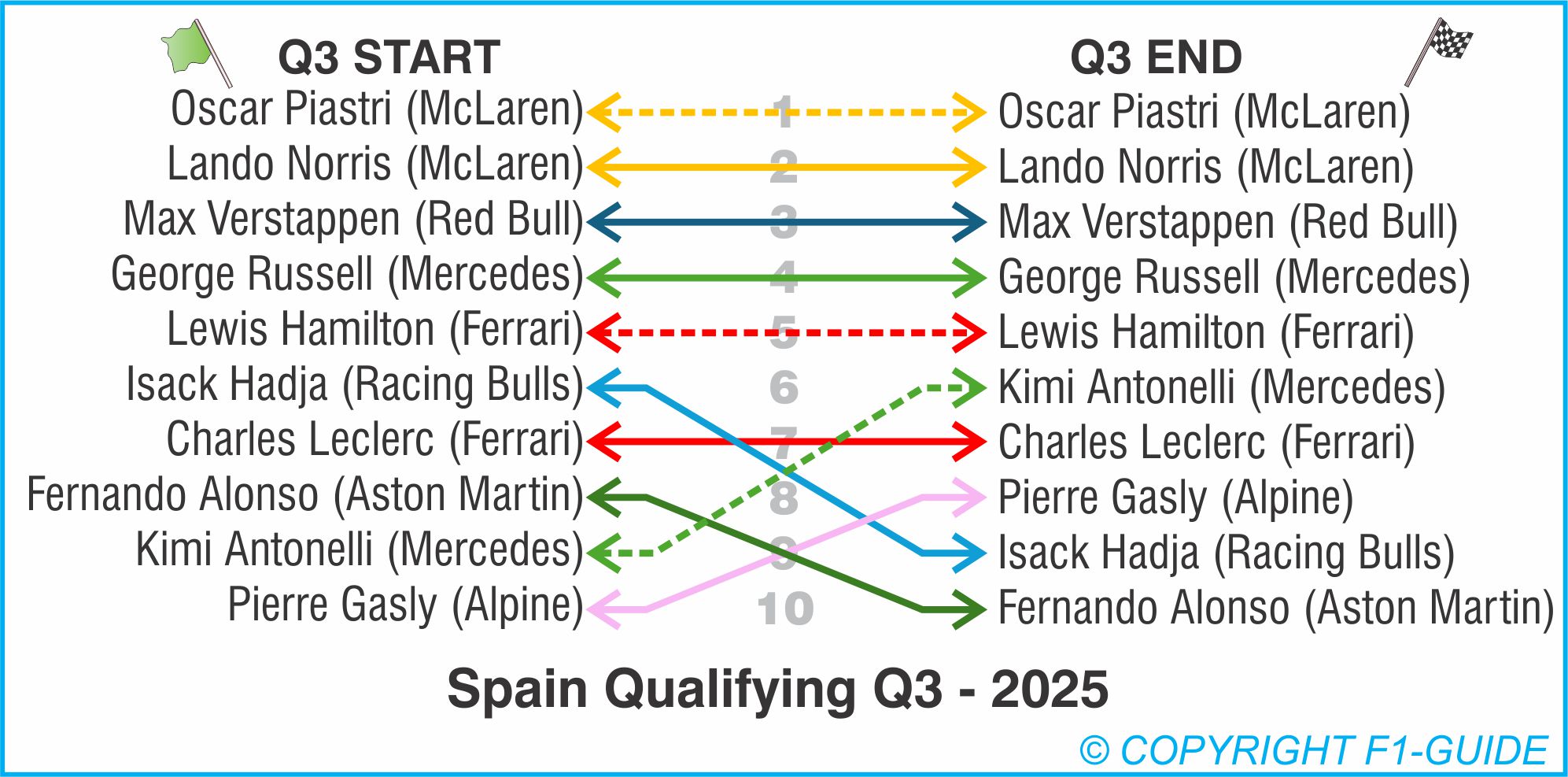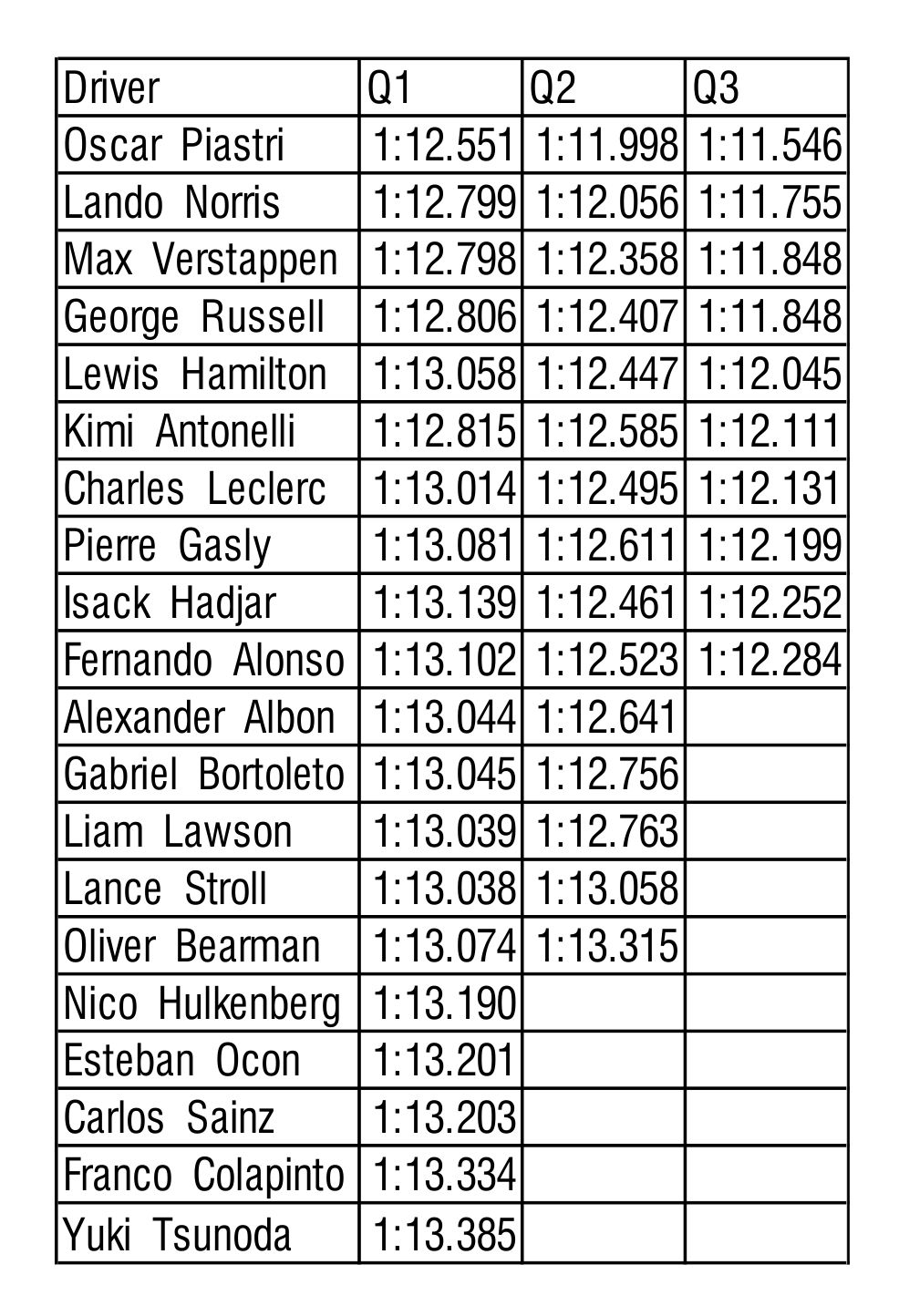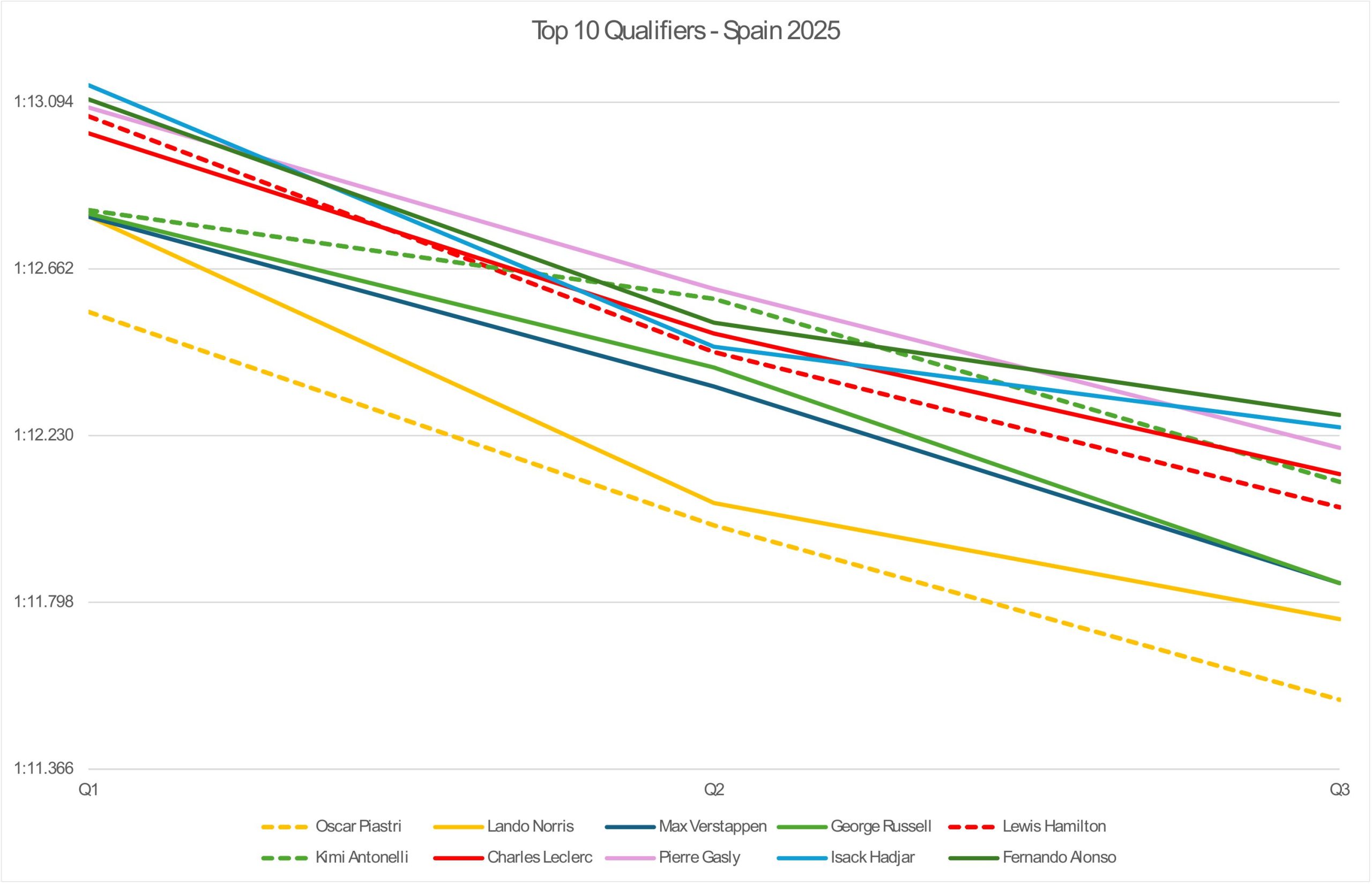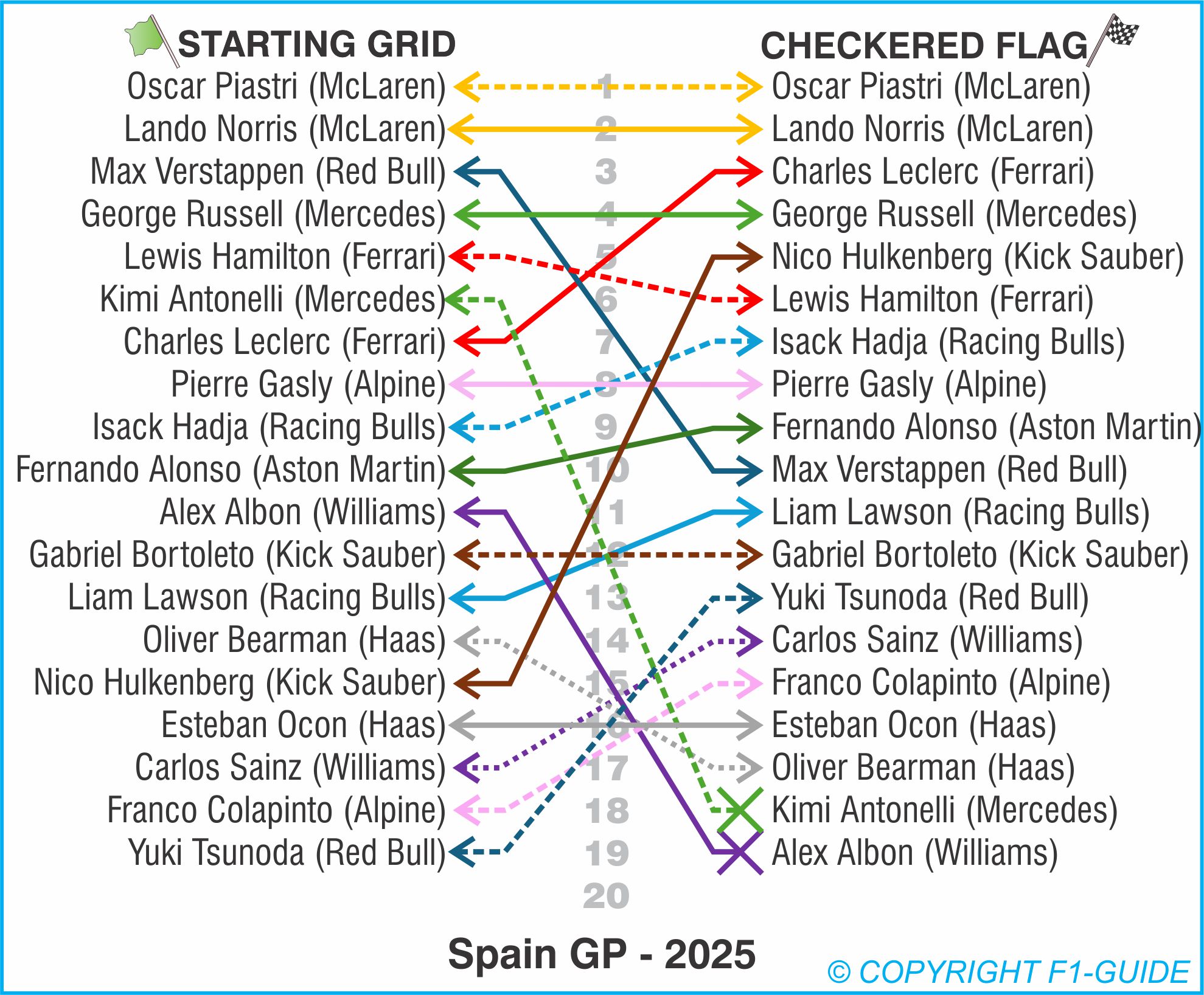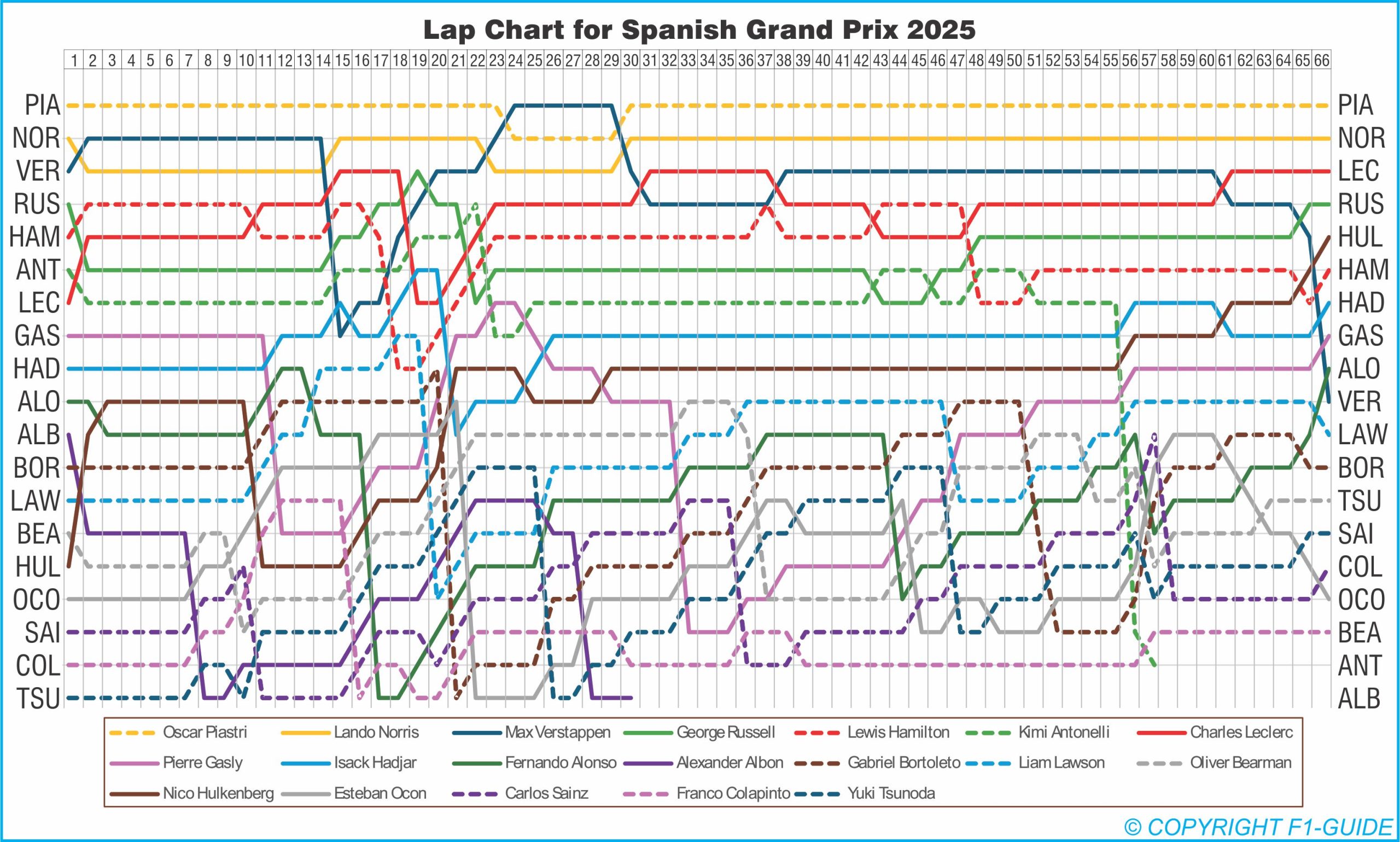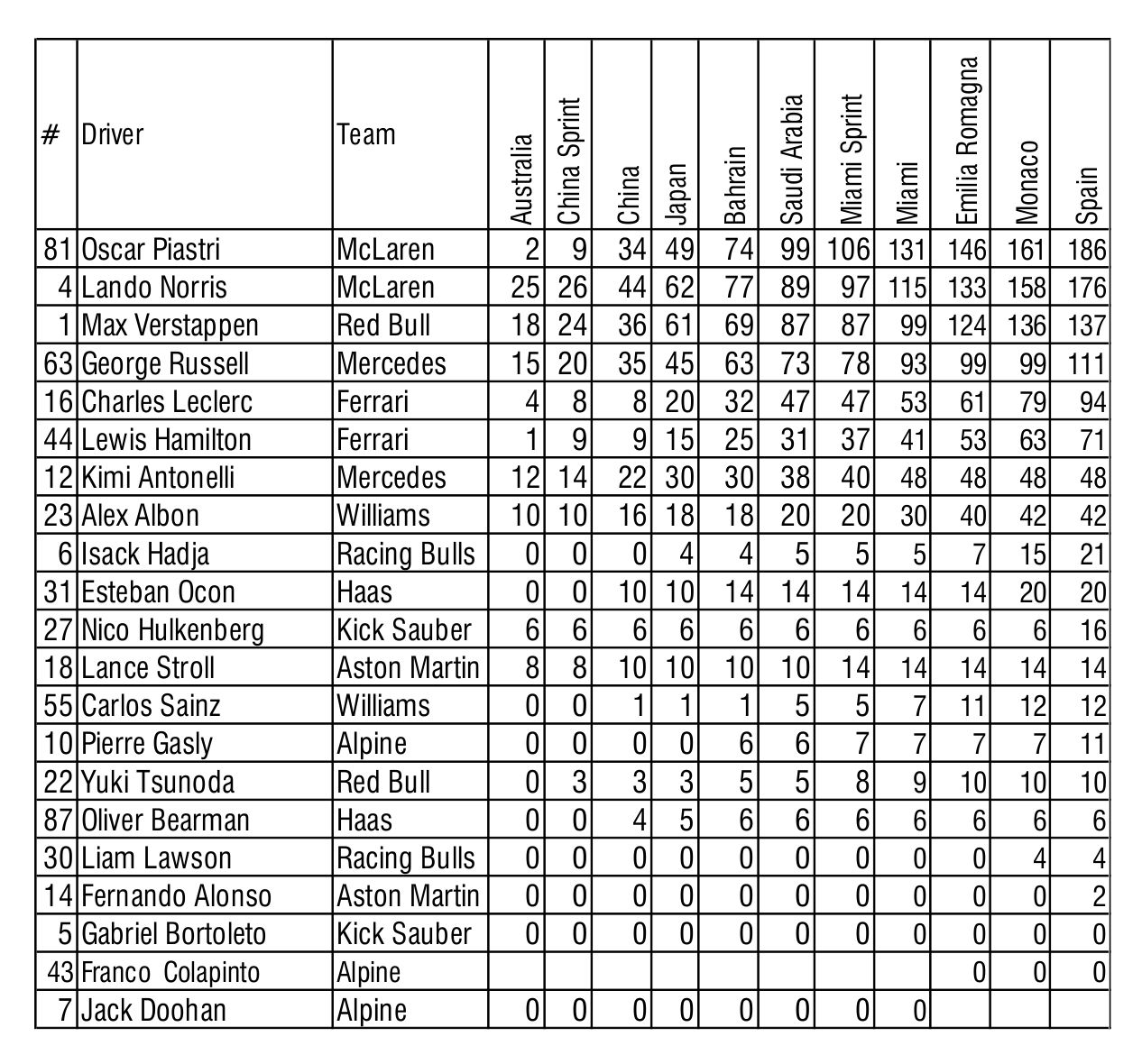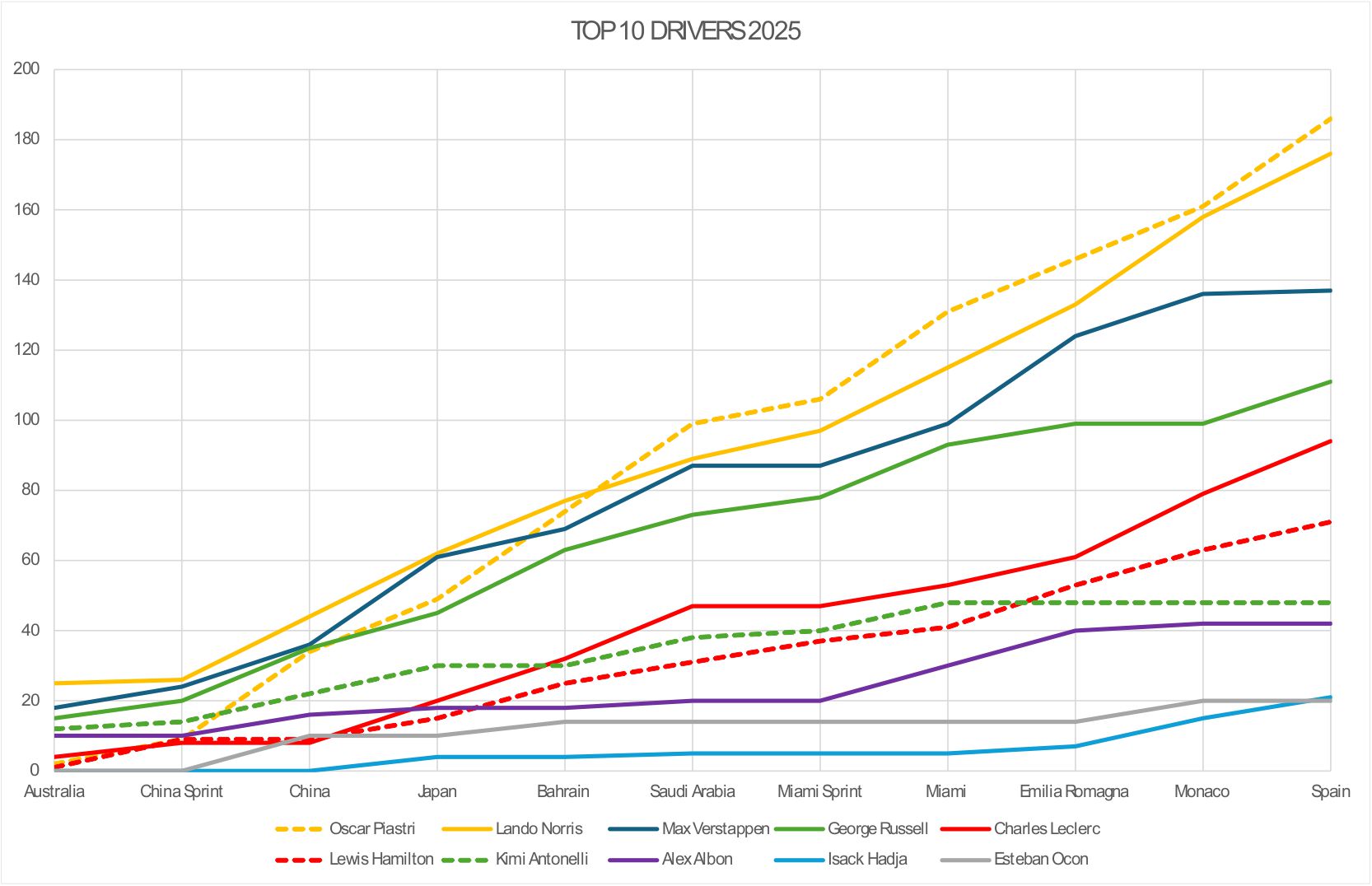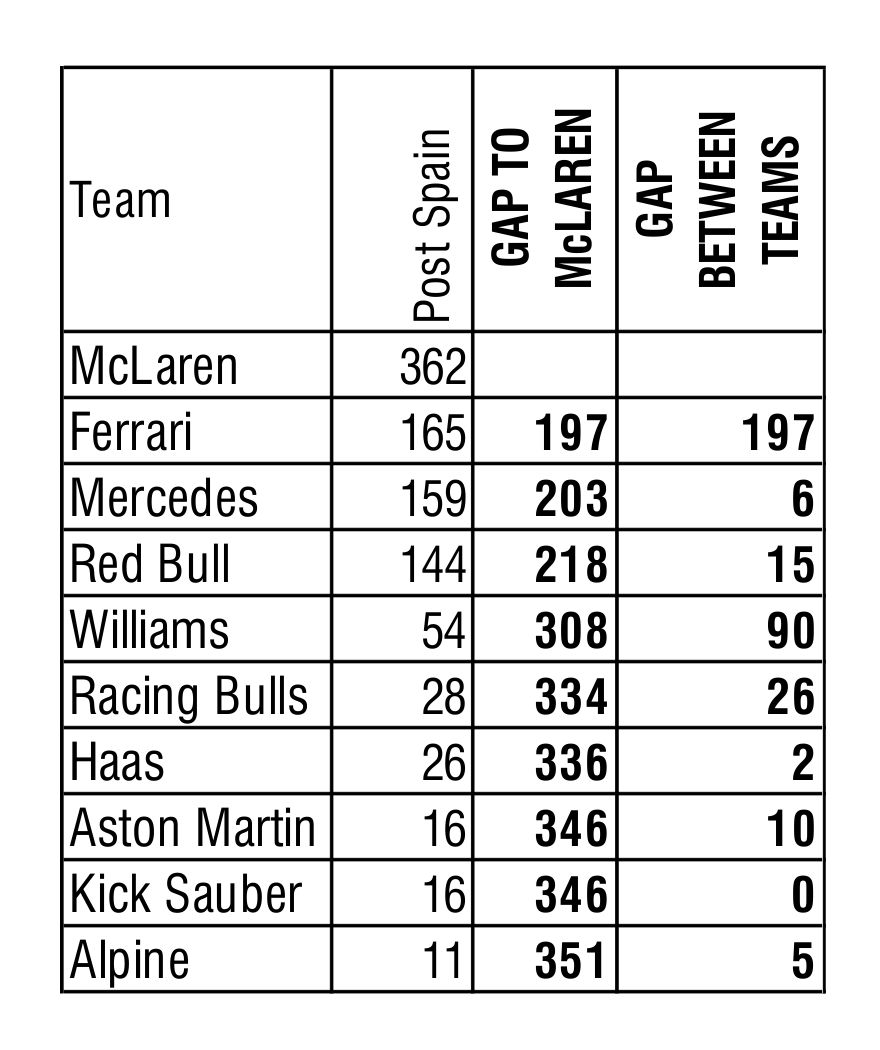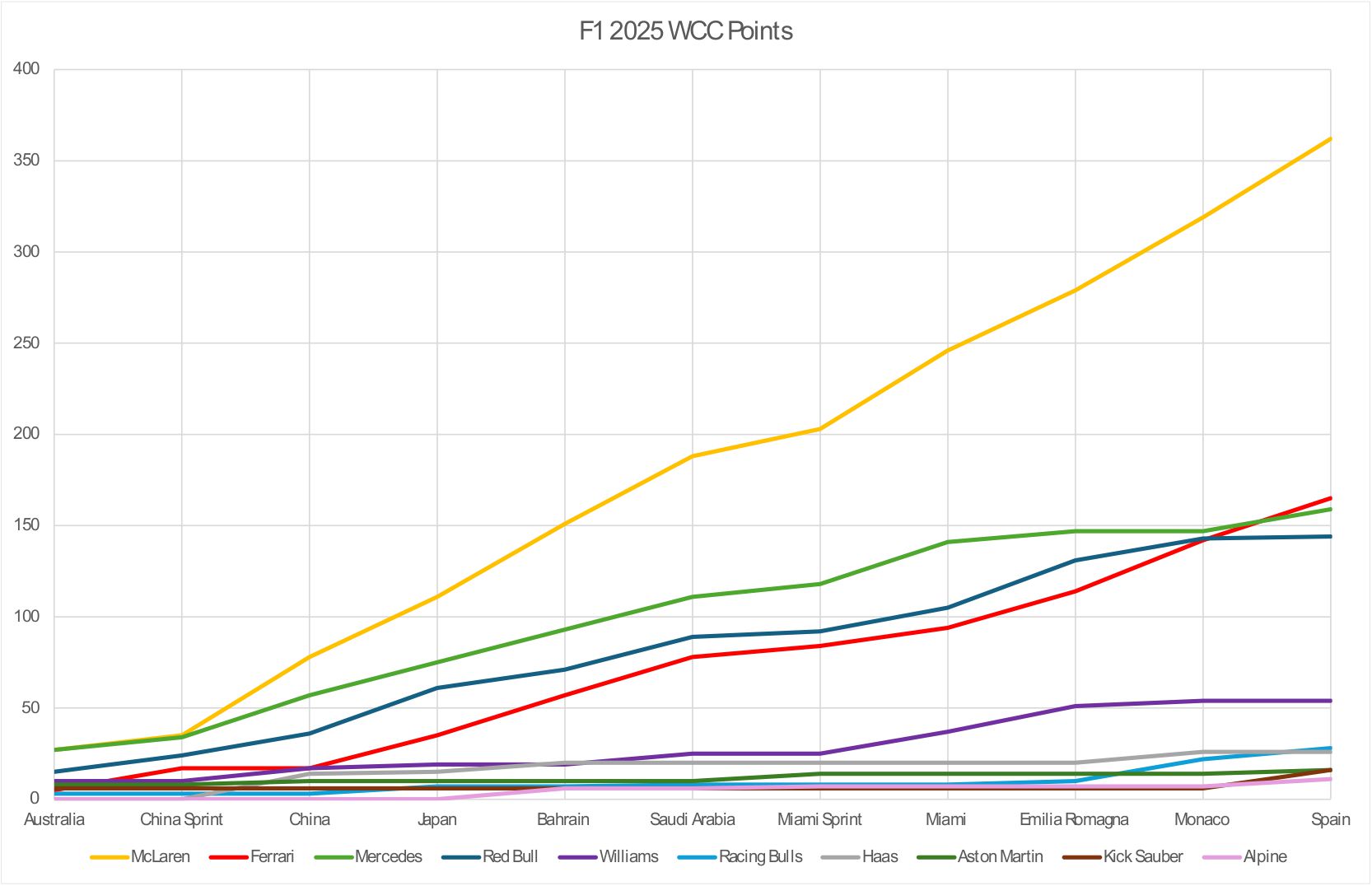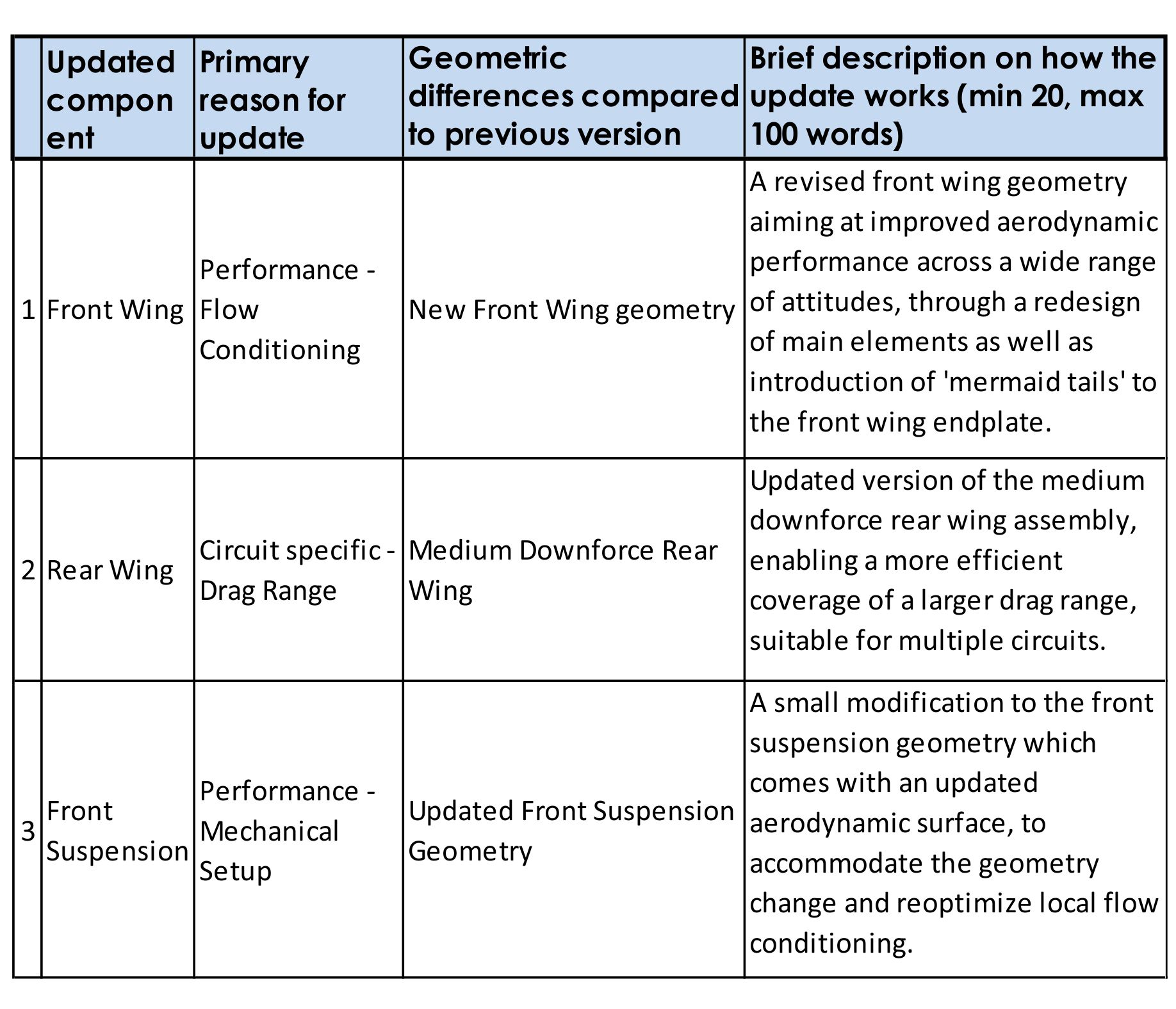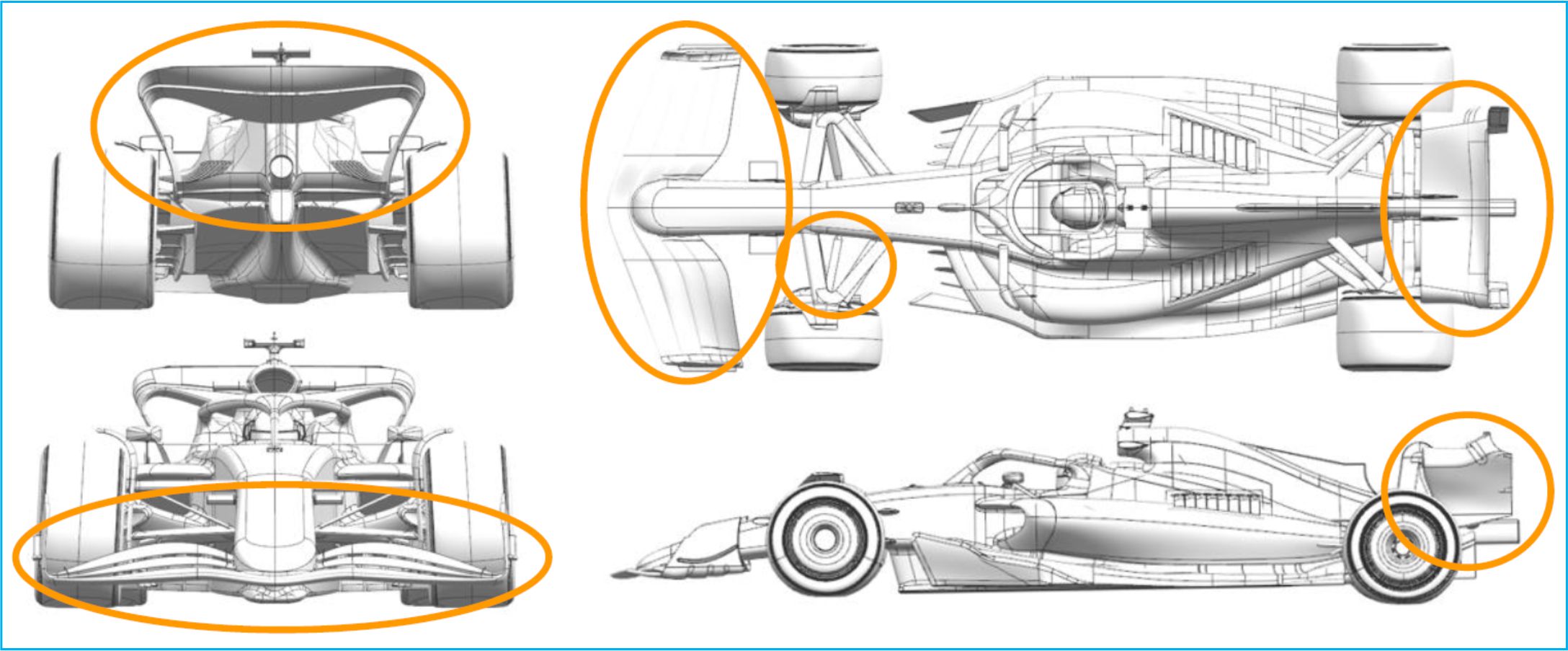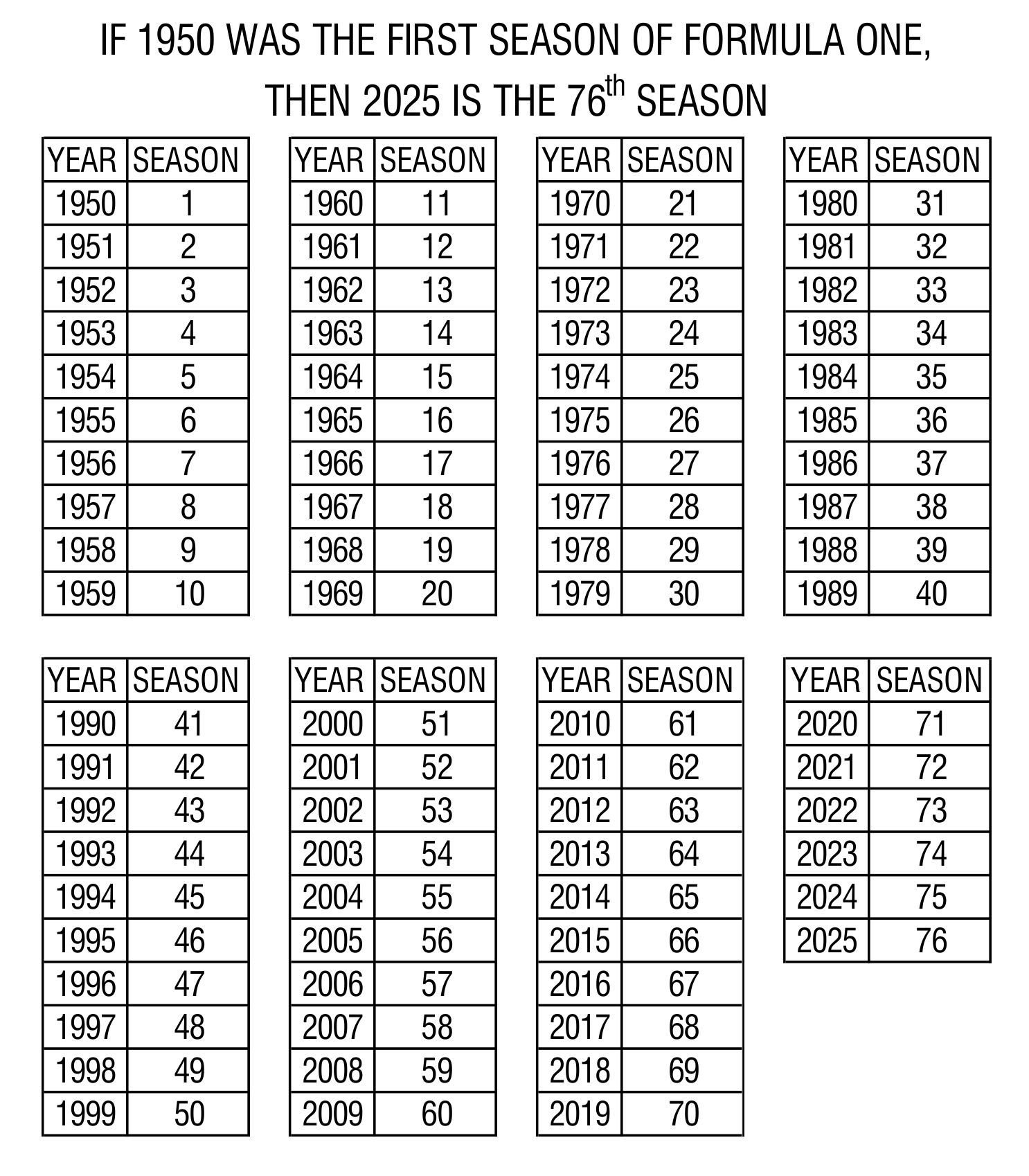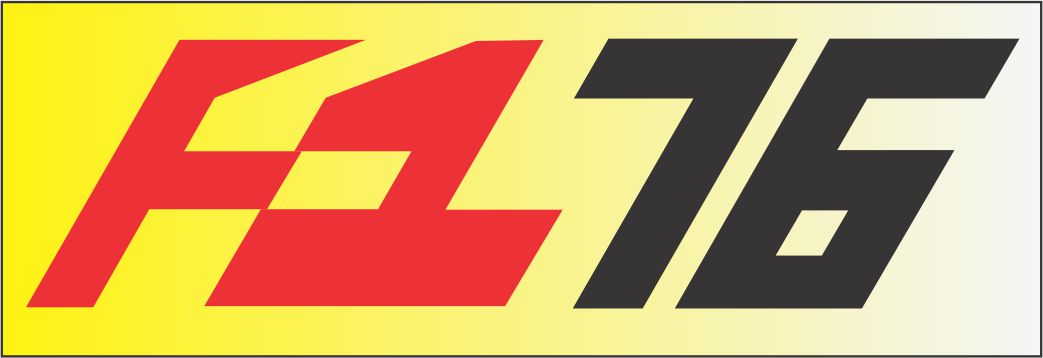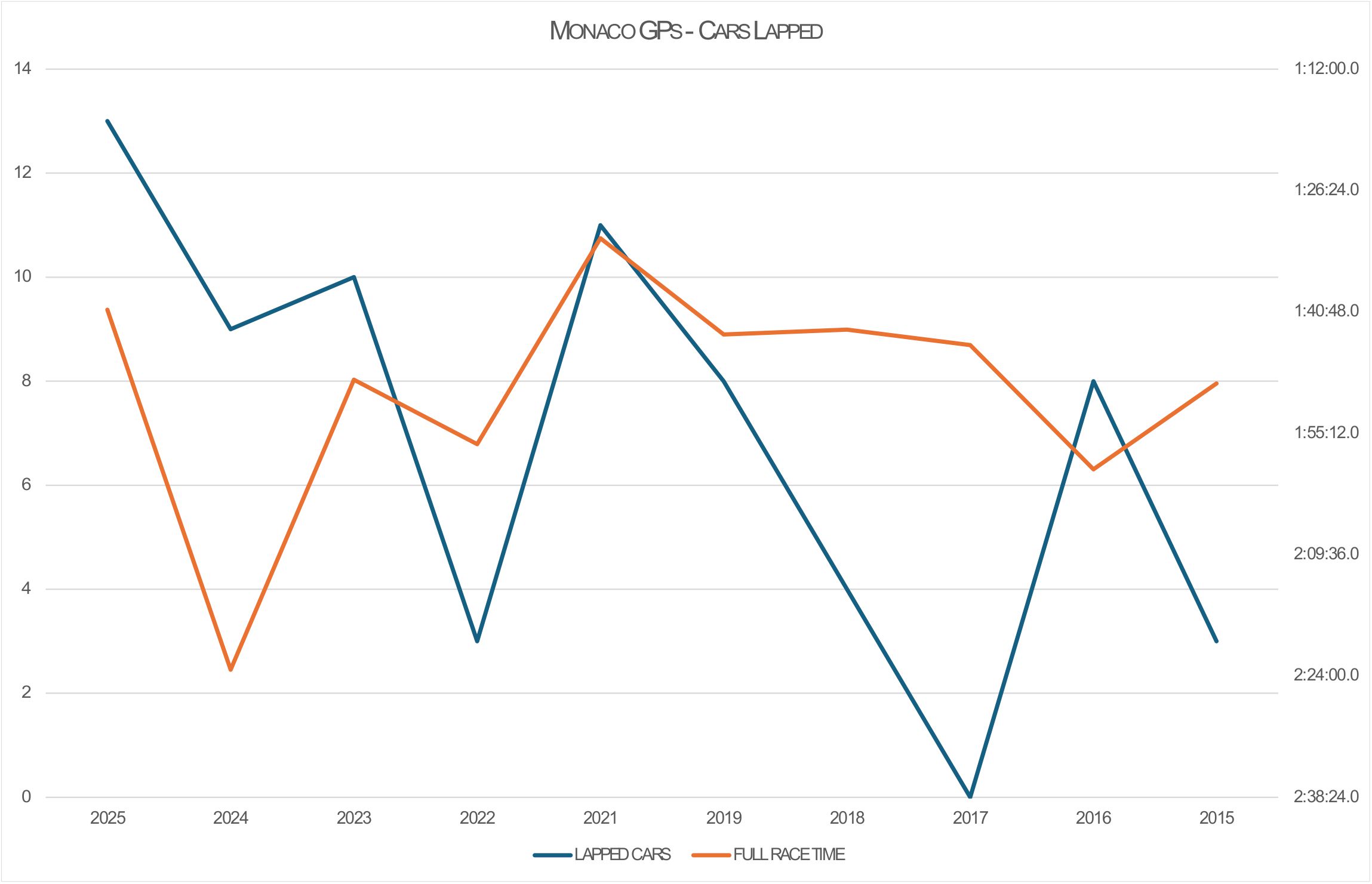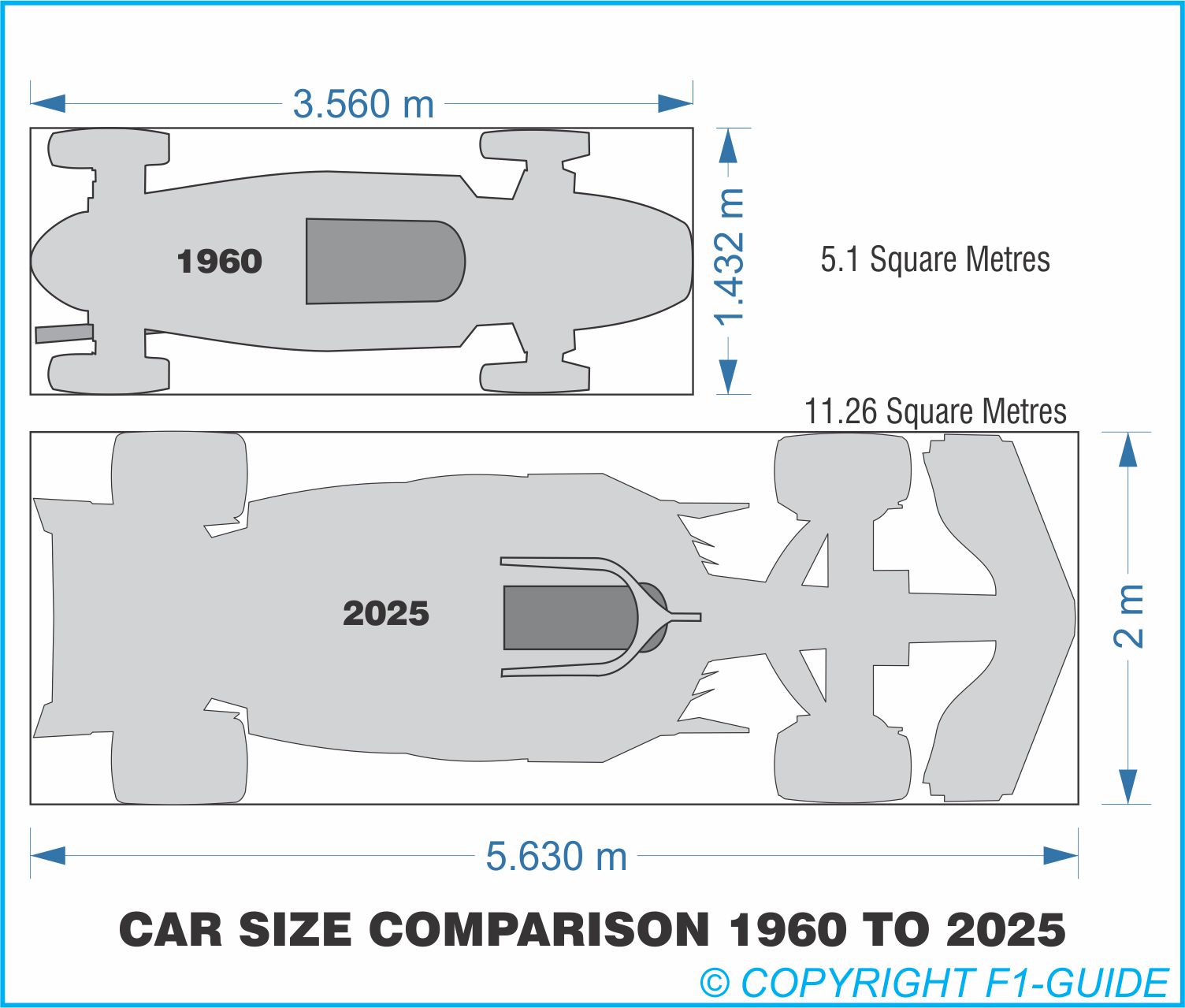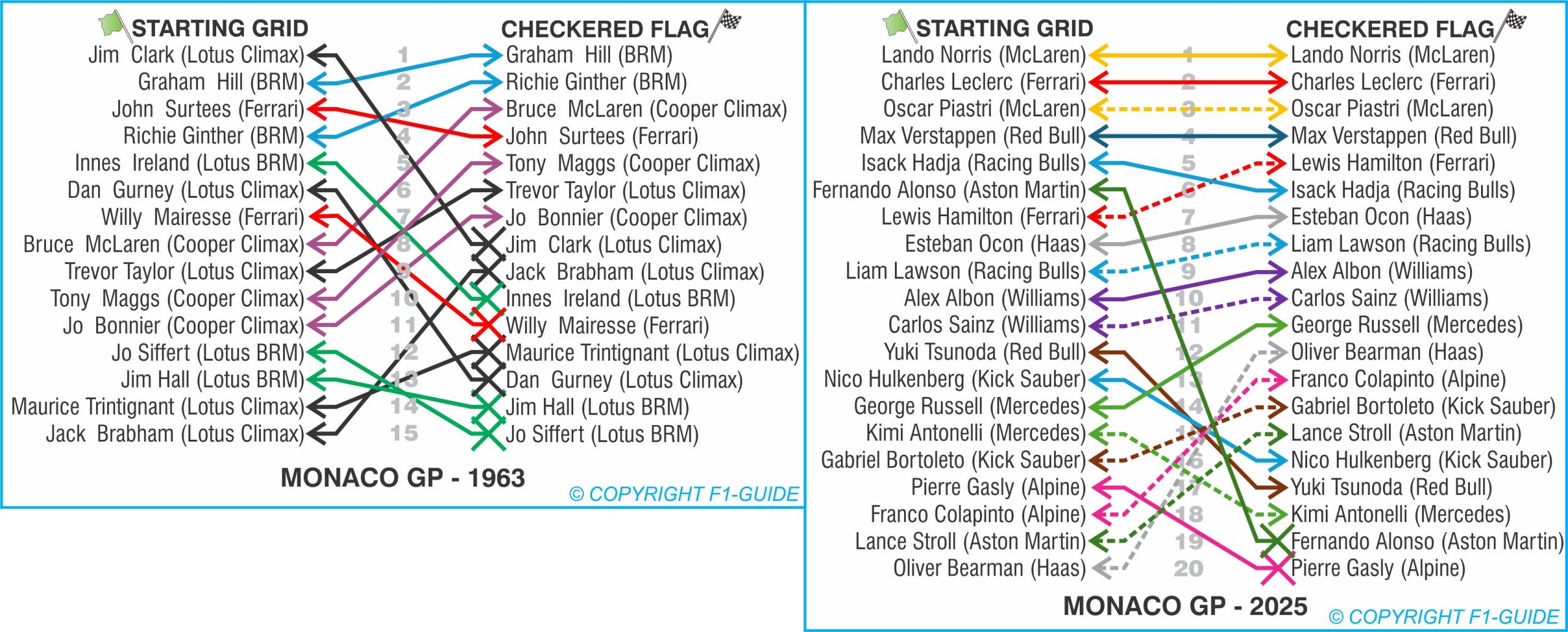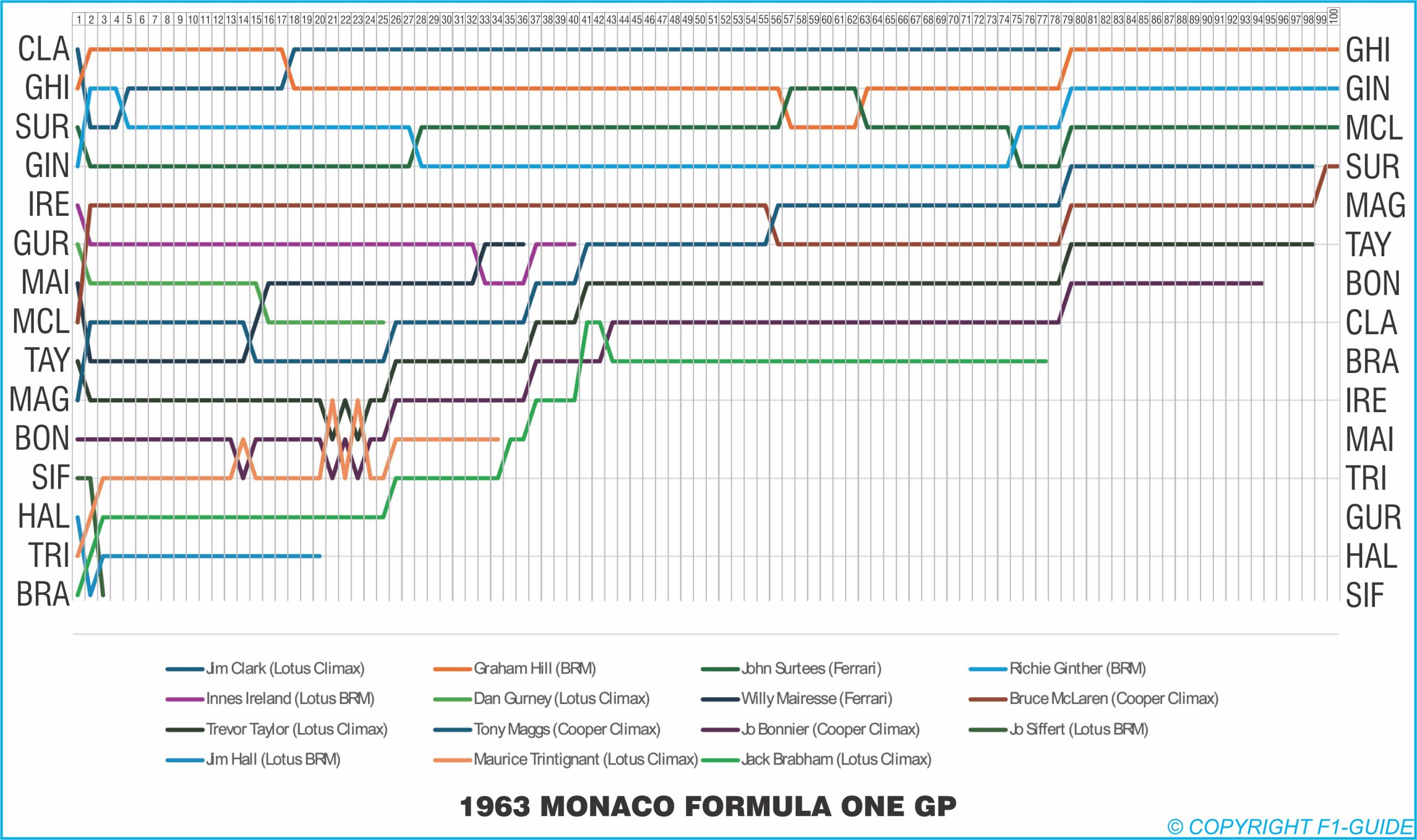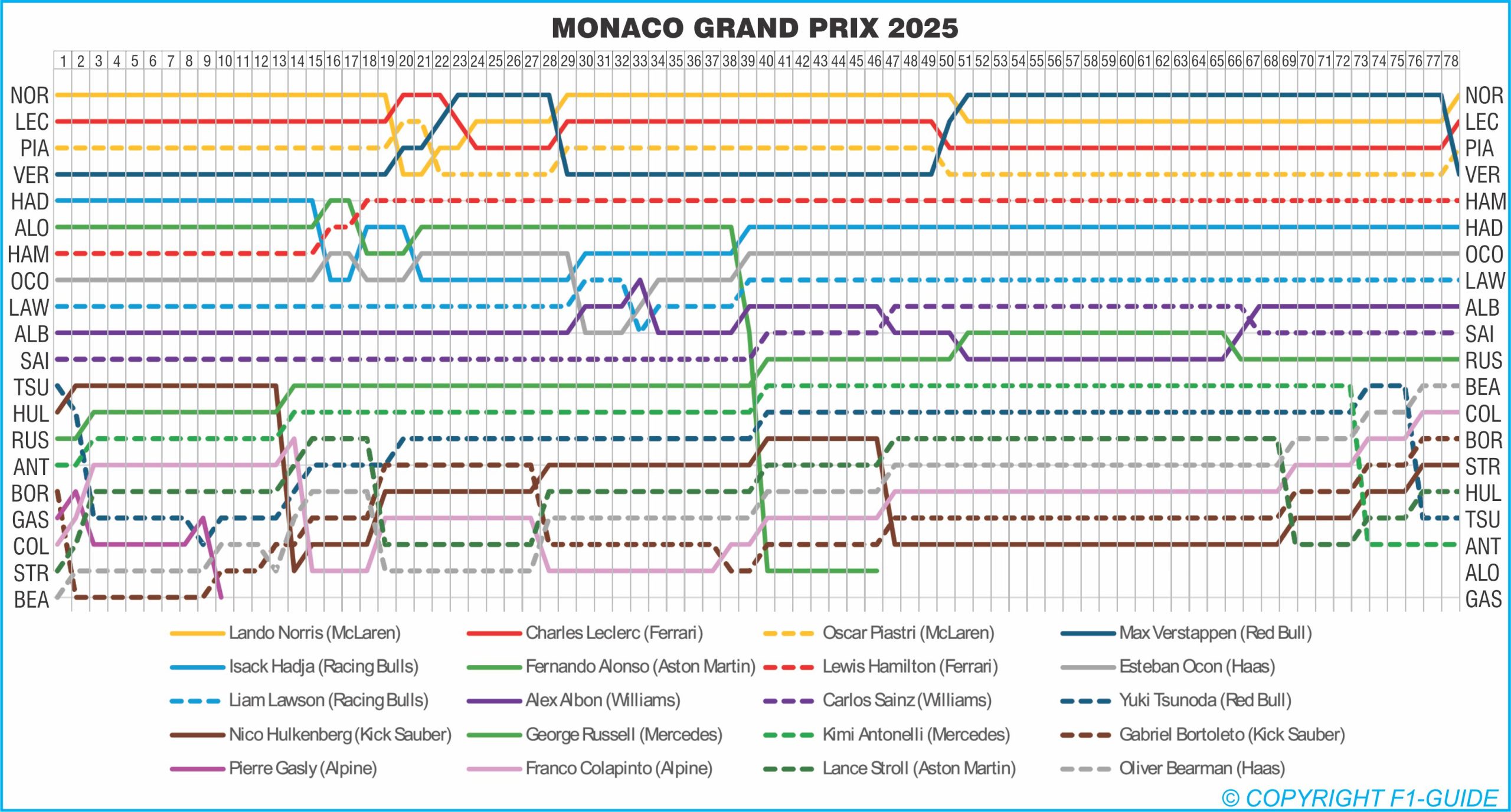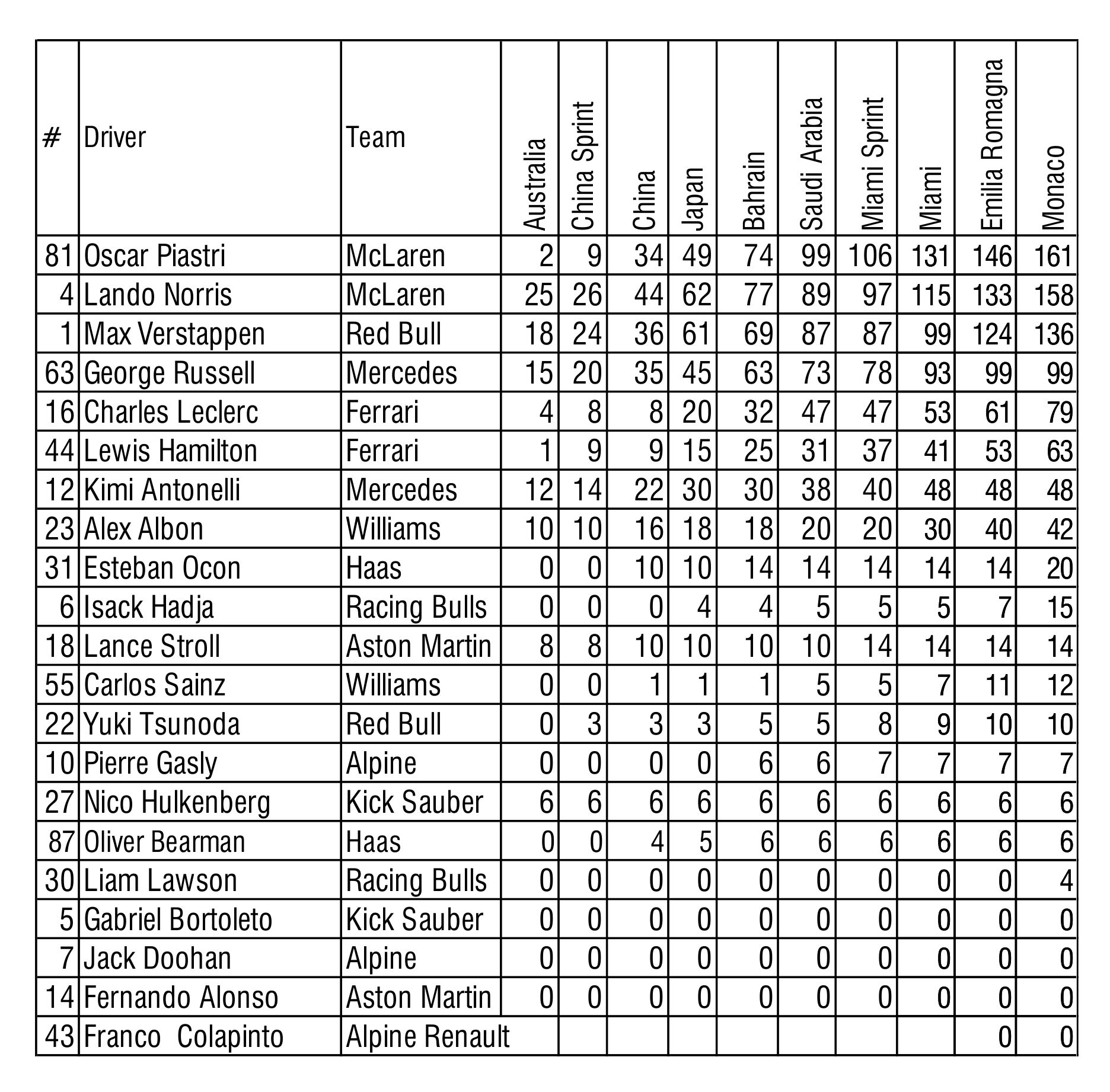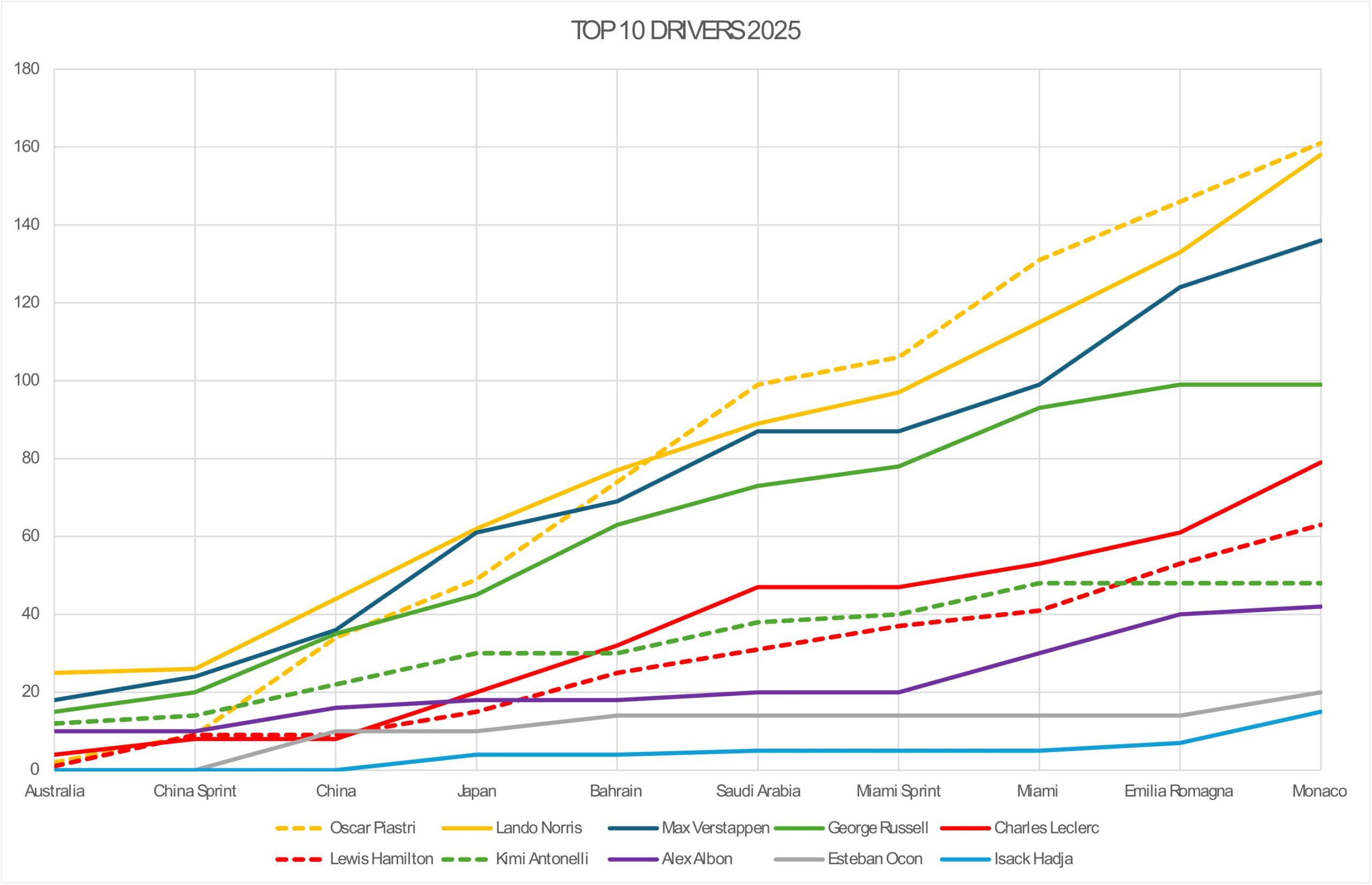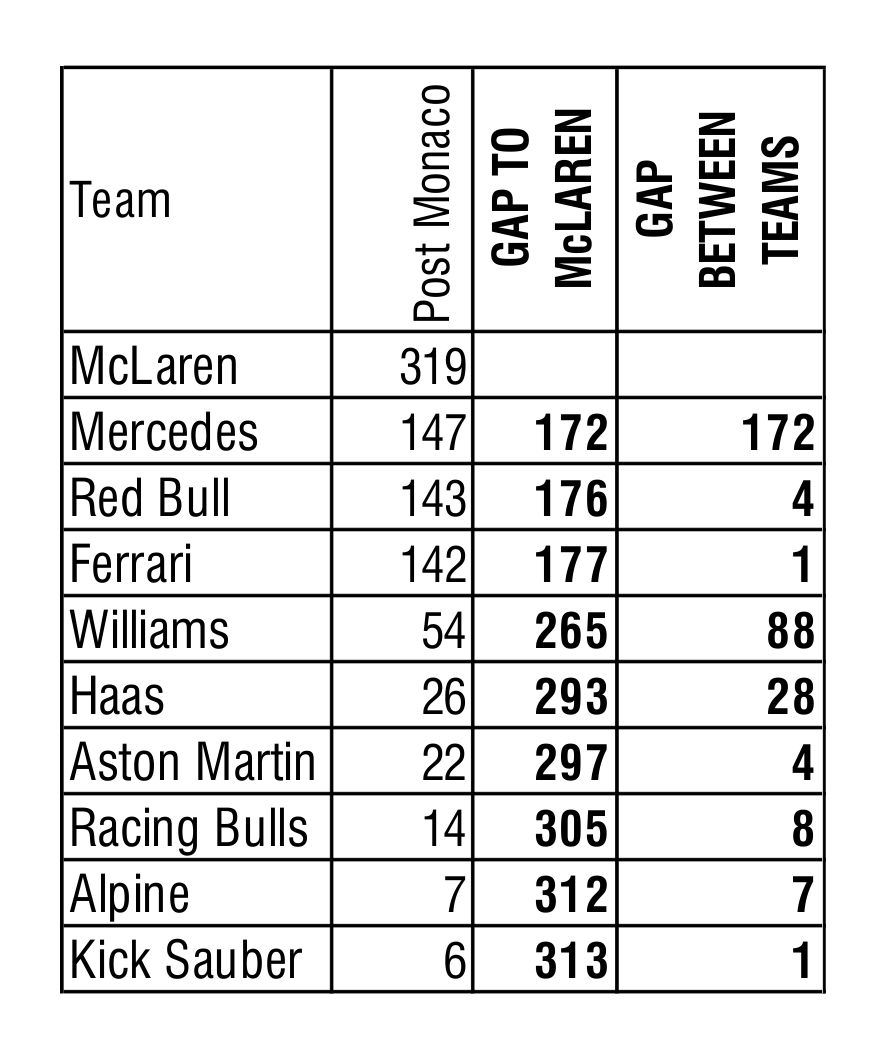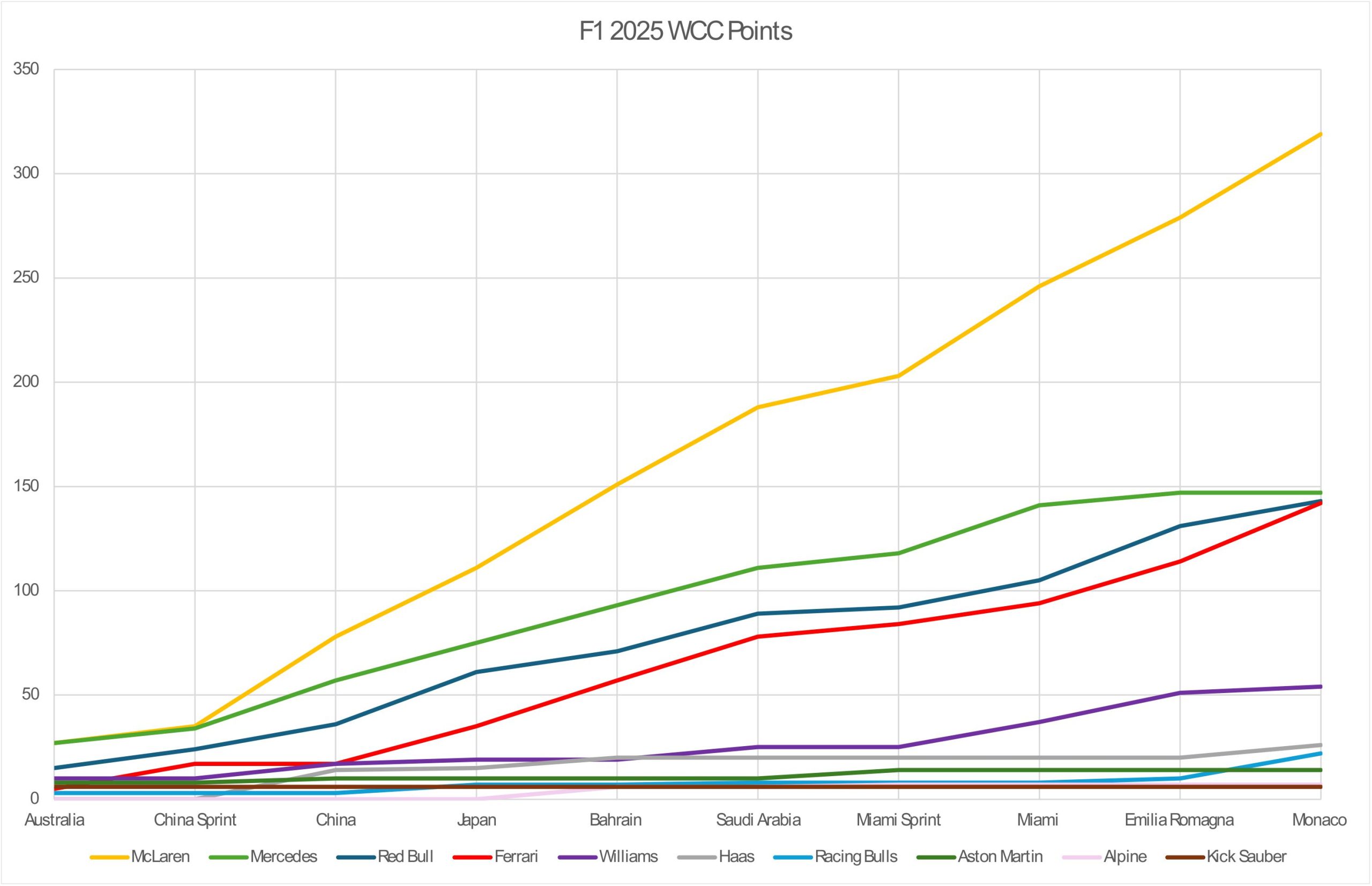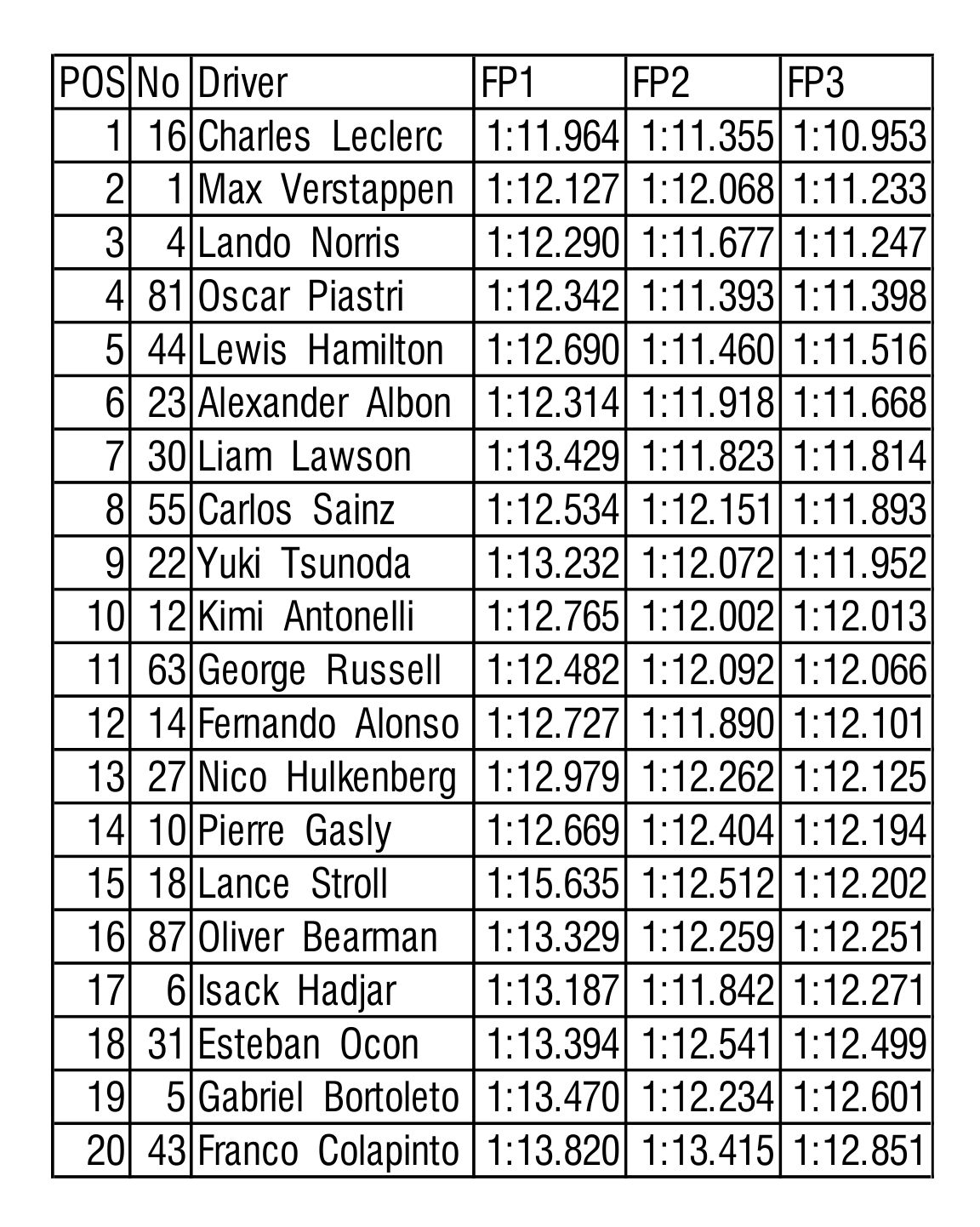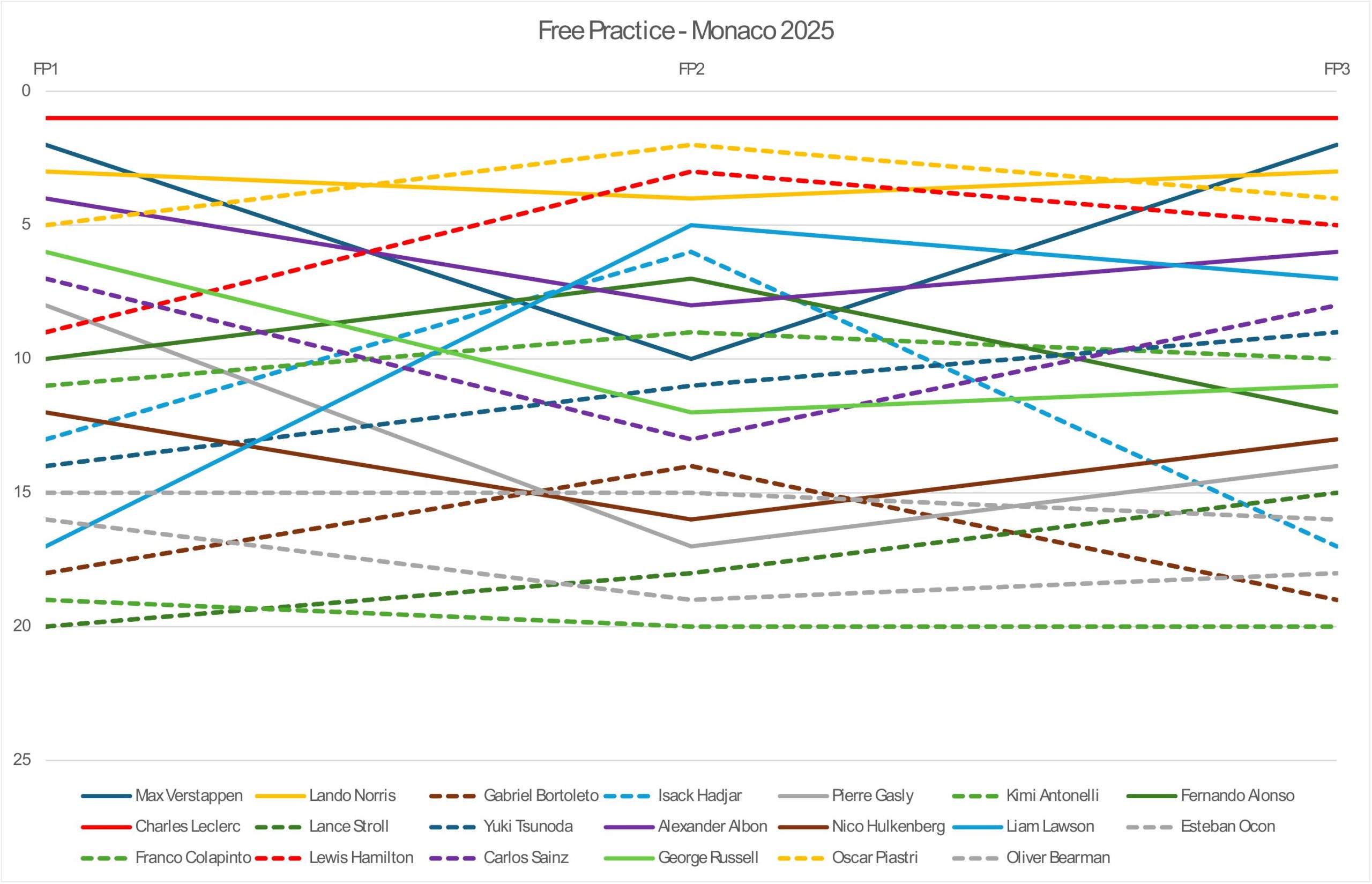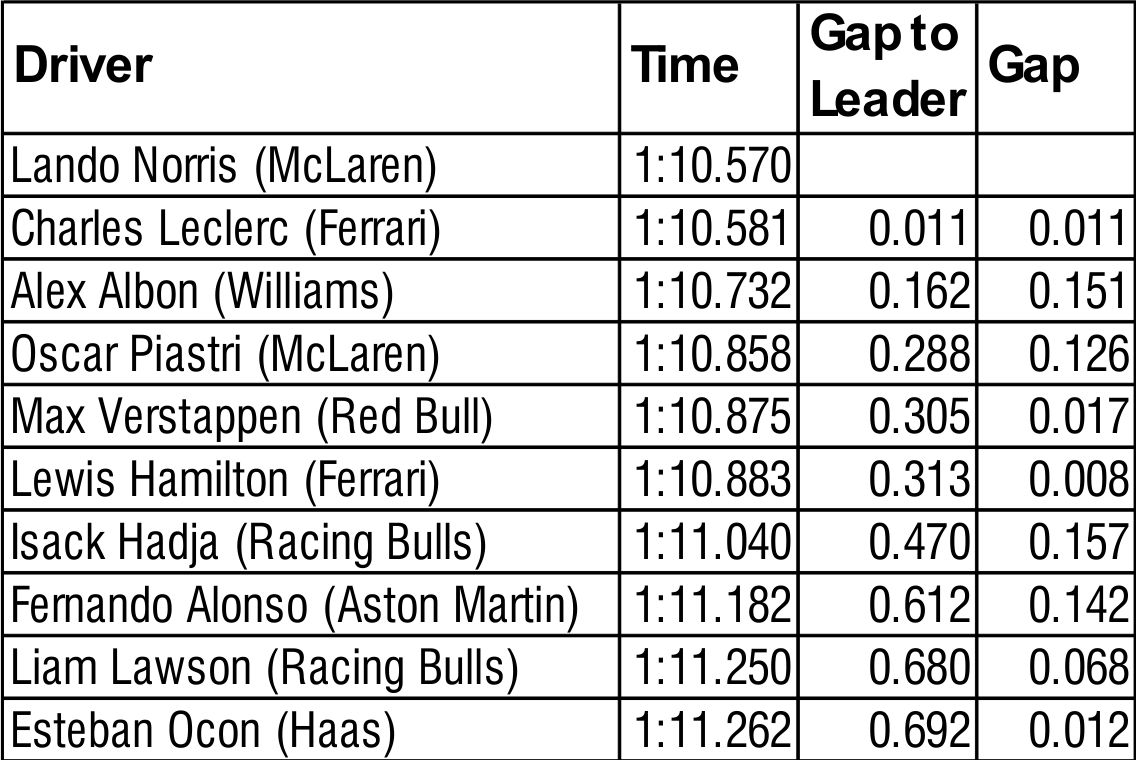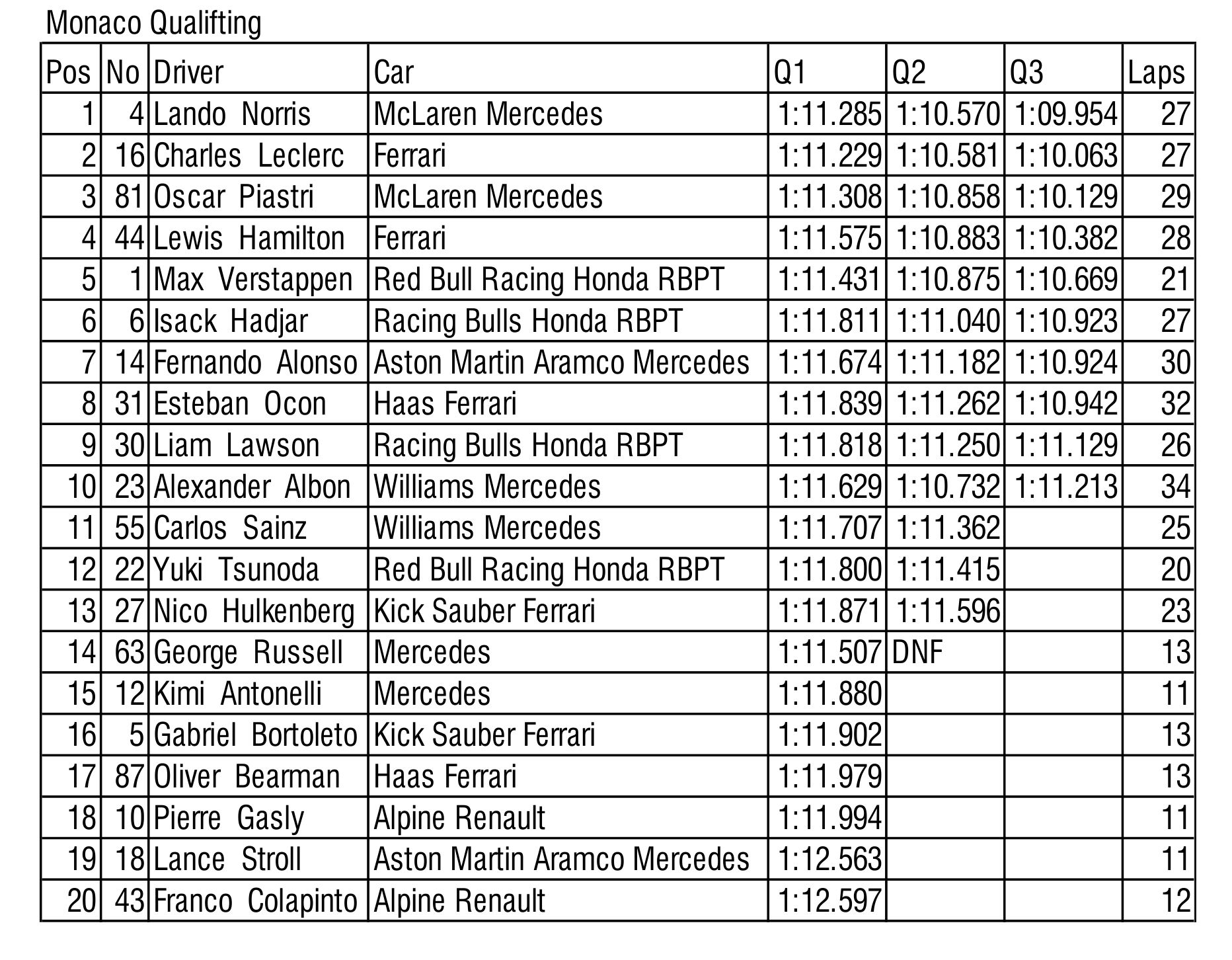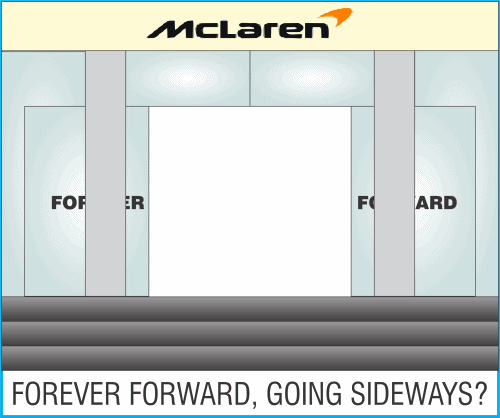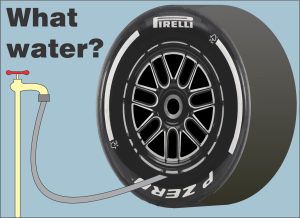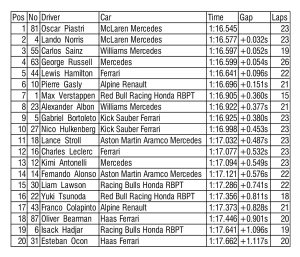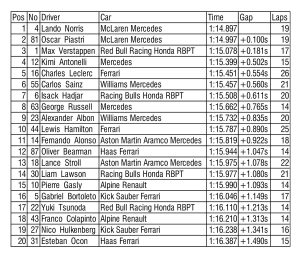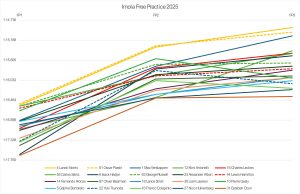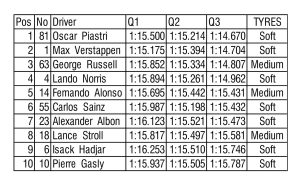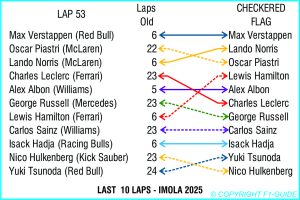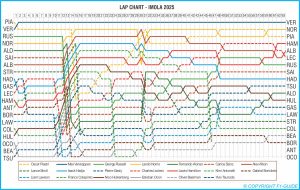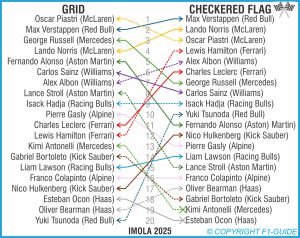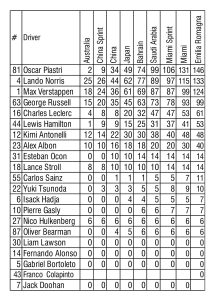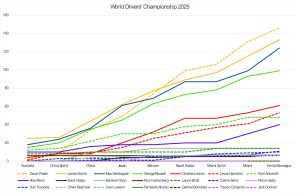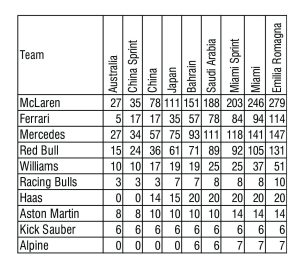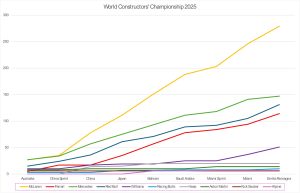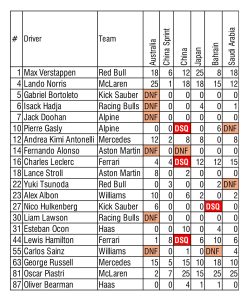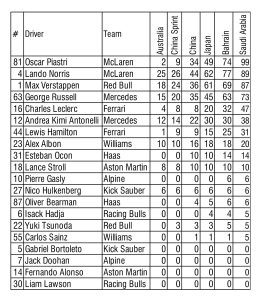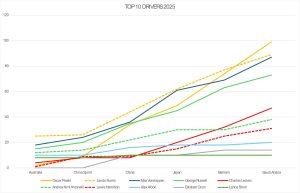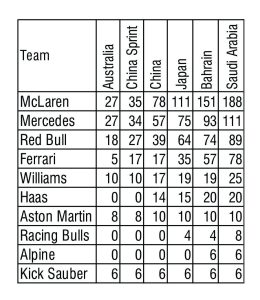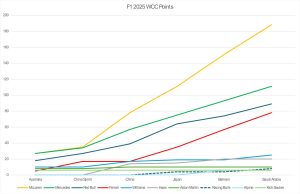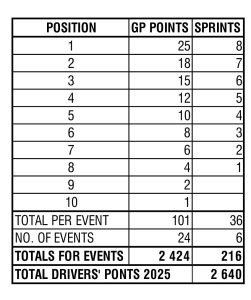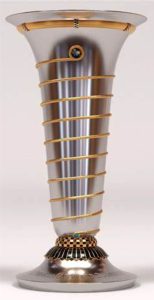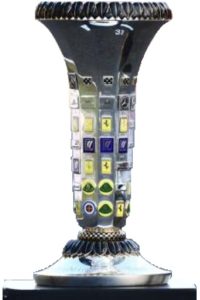Mexican GP
The Circuit Gilles Villeneuve did not disappoint. Thrills and spills dominated the weekend. Good racing, silly mistakes, protests, gamesmanship and a five plus hour wait for the official result were all part of an interesting weekend.
The tyres selected by Pirelli for the event were the softest C4, C5, and the new C6 as the hard, medium and soft respectively.
FREE PRACTICE
In FP1 Charles Leclerc clipped the wall of turn 3 damaging both the Ferrari car’s left hand side suspensions. He had done only 9 laps on the soft tyre and had set the fastest time at that stage. That crash cost Charles a lot of practice as his car was not repaired in time for FP2. Altogether Charles only managed 38 practice laps whereas the average laps for every one else was 80 laps.
Charles Leclerc’s Crash
After completing 2 laps in FP2, local Canadian driver, Lance Stroll (Aston Martin) clipped a wall and broke his car’s front suspension. At least his car was repaired for the next day’s FP3 and he managed 55 practice laps.
Lance Stroll’s Crash
In FP3 it was Nico Hulkenberg (Kick Sauber) and Oscar Piastri (McLaren) who left car debris around the wall of champions. In Nico Hulkenberg’s case he spun the car coming out of the turns 13, 14 chicane. This caused both the front and rear wings to brush the wall. In Oscar’s case it was running wide out of turn 14 and brushing against the wall, which damaged his front suspension. Both made it back to the pits for repairs.
Oscar Piastri crash
Yuki Tsunoda (Red Bull) was given a 10-place grid penalty for overtaking the limping McLaren under red flag conditions.
The times of the five fastest drivers in each free practice session
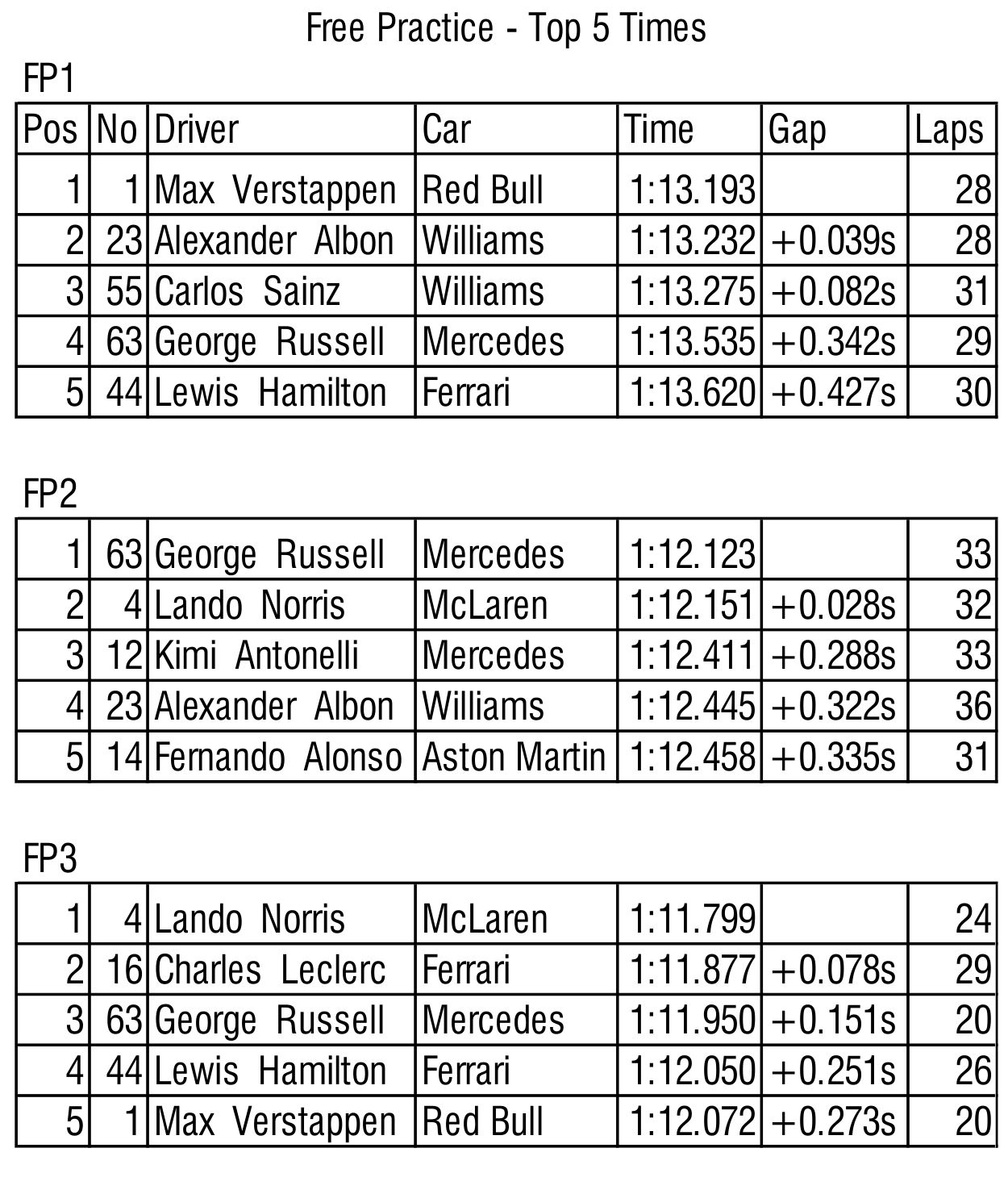
Top 5 in Free Practices
A graph of all the drivers’ times in each practice session
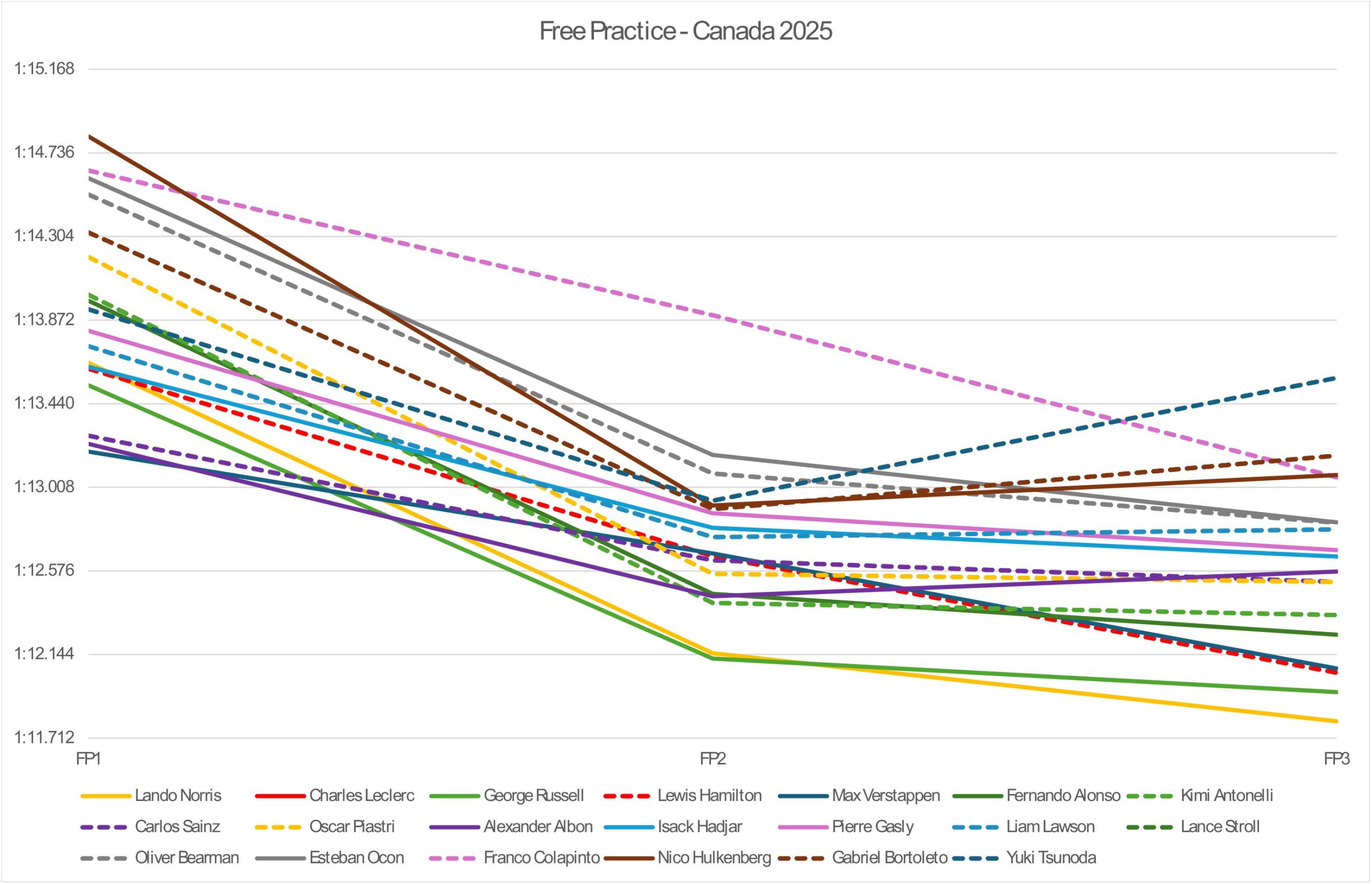
Graph of Free Practice Times
QUALIFYING
Q1
With five and a half minutes left in the session it was red flagged for a bizarre incident. The side pod and engine covers (almost the whole left-hand side behind the role hoop engine air intake) blew off of Alex Albon’s Williams.
The session continued after the debris from the Williams was cleaned up.
Those eliminated in the first qualifying portion. Gabriel Bortoleto (Kick Sauber), Carlos Sainz (Williams), Lance Stroll (Aston Martin), Liam Lawson (Racing Bulls) and Pierre Gasly (Alpine). The surprise was Carlos in the Williams who appeared to have a fast enough car to make Q3. Replays showed him hindered by Isack Hadja (Racing Bulls).
Q2
It was amazing that after everyone had set a first run, only Max Verstappen 1:11.638 and Oscar Piastri 1:11.715 felt safe enough to not do a second timed lap.
Those eliminated were Yuki Tsunoda (Red Bull), Franco Colapinto (Alpine), Nico Hulkenberg (Kick Sauber), Oliver Bearman (Haas) and Esteban Ocon (Haas).
Q3
Absolutely brilliant qualifying. After the first timed laps it was Max Verstappen ahead of Oscar Piastri by 0.025 seconds with George Russell 0.243 seconds behind Oscar.
George’s last lap was one of those flawless laps that drivers dream about having. He even stated this in his post qualifying interviews. He found an amazing six tenths of a second improvement and ended up 0.160 seconds ahead of Max Verstappen. That is quite a lot for a short circuit like Circuit Gilles Villeneuve.
Lap comparison – George Russell (Mercedes), blue; Max Verstappen (Red Bull), orange and Oscar Piastri, white.
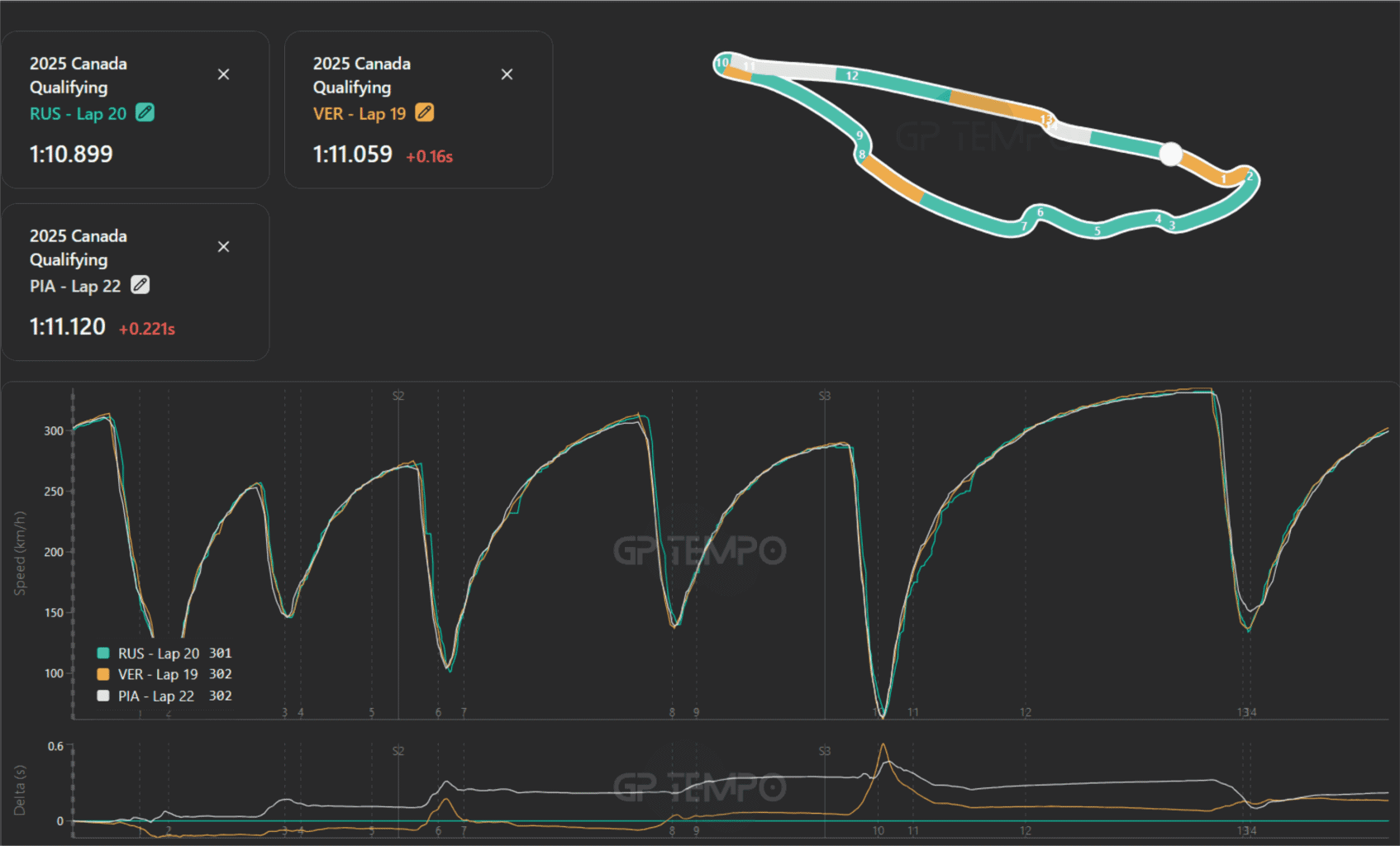
Qualifying Comparison Times-Russell,Verstappen,Piastri
All the qualifying times
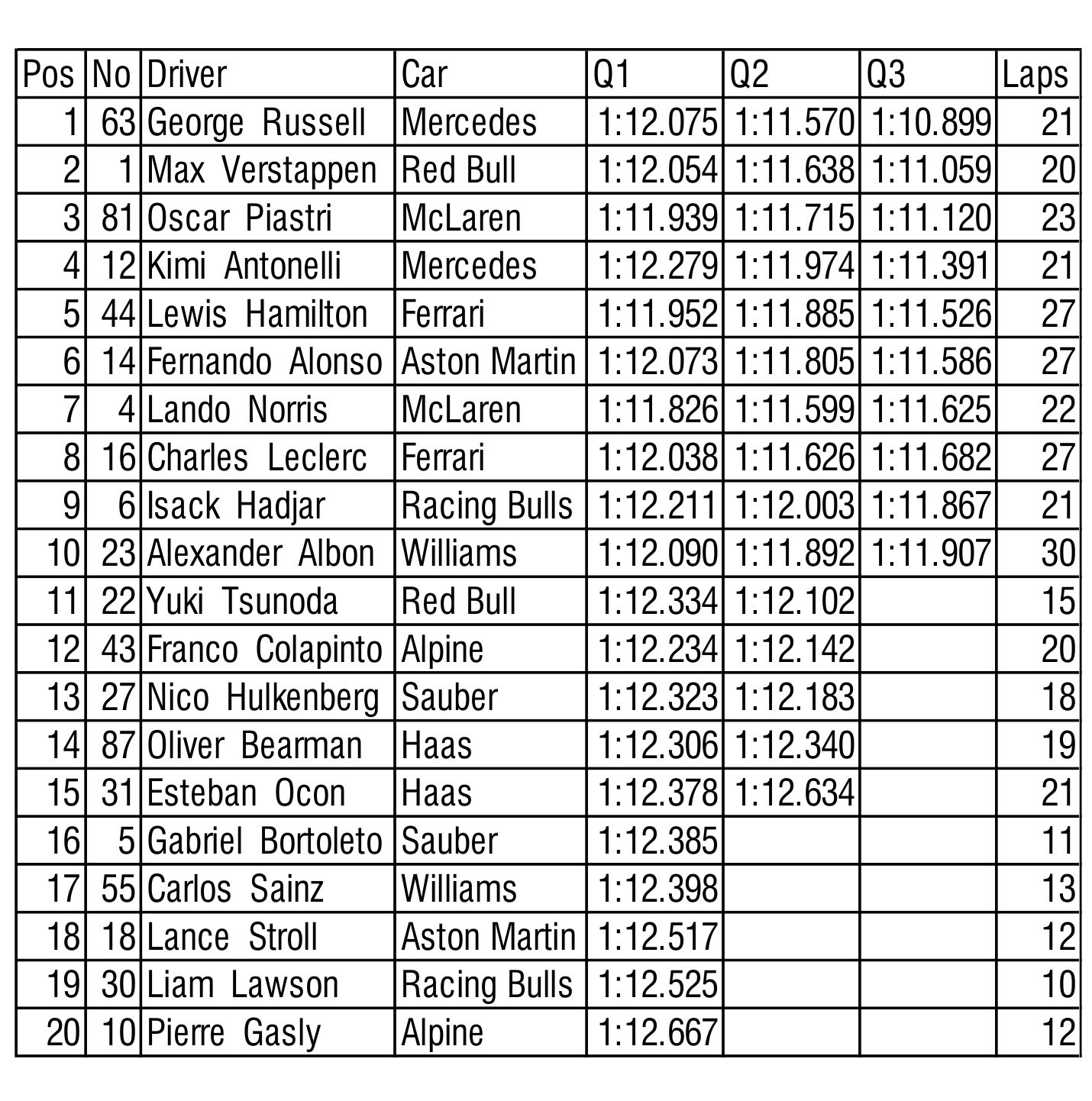
All the Qualifying Times
All the qualifying times Graphically
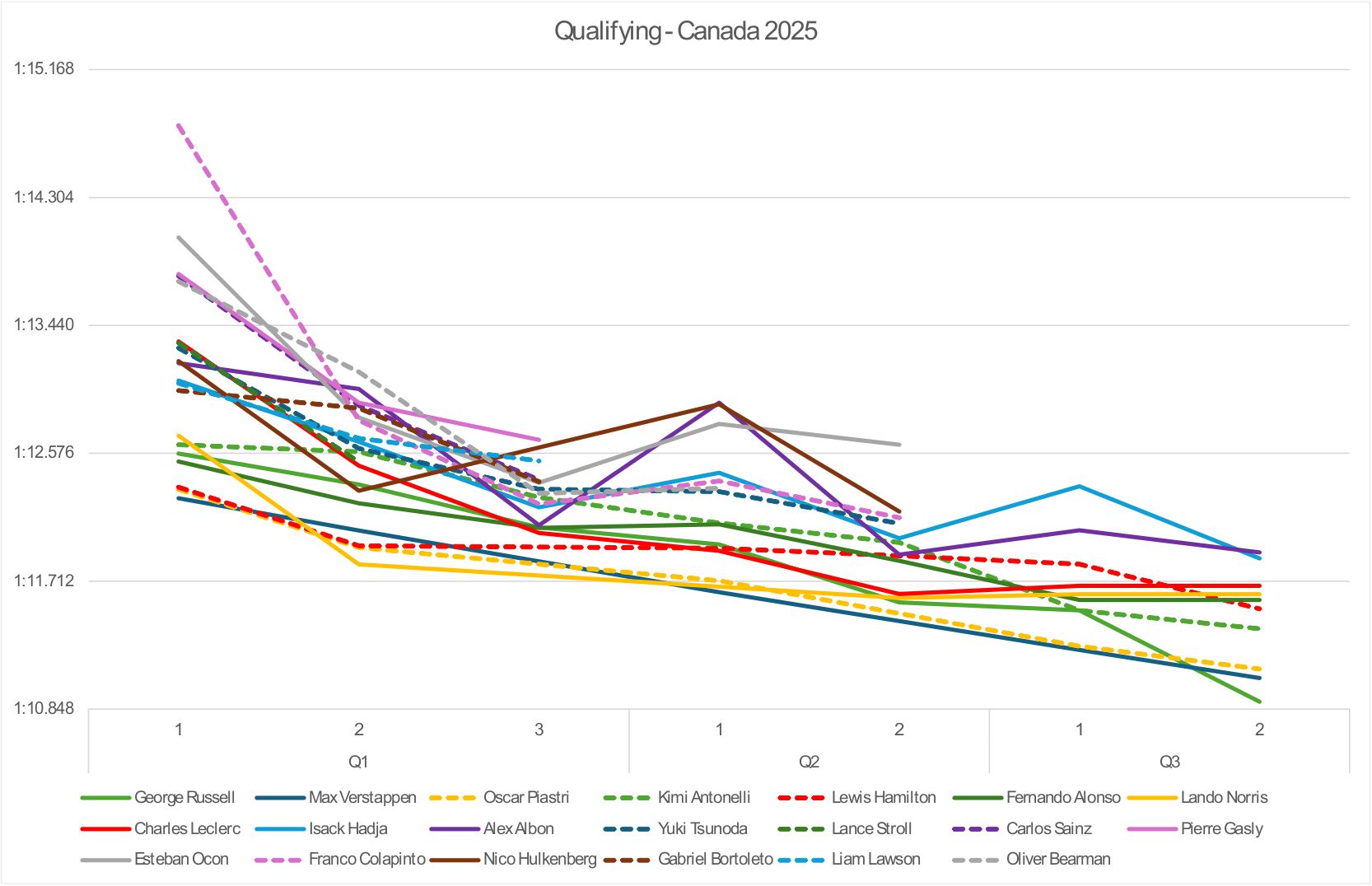
All Qualifying Times
The top ten graphically
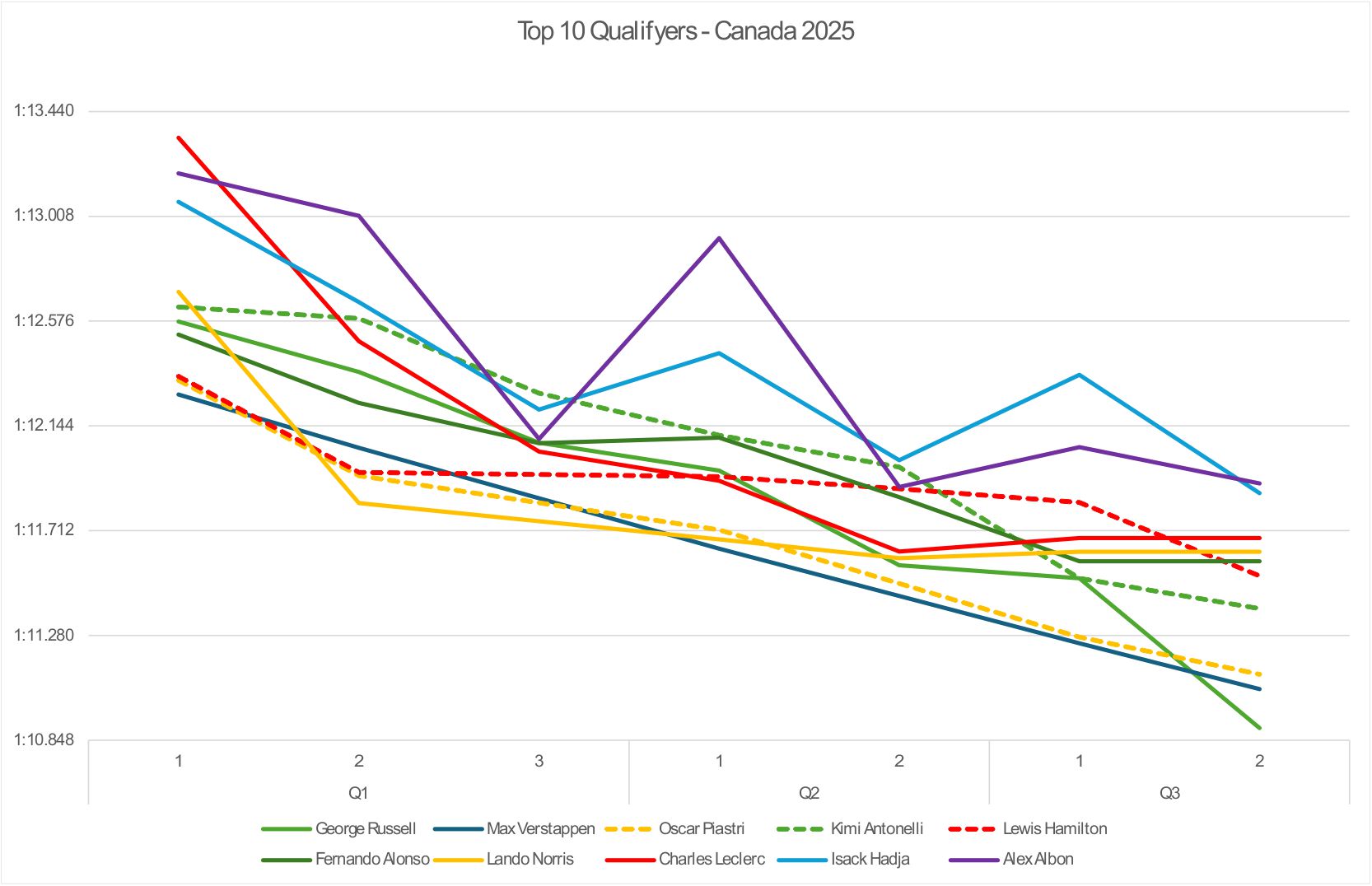
Top Ten Qualifiers
THE RACE
George Russell won the Canadian Grand Prix ahead of Max Verstappen and Kimi Antonelli.
Kimi Antonelli becomes the third youngest driver to get a podium finish. Younger than him were Max Verstappen at the 2016 Spanish GP and Lance Stroll at the 2017 Azerbaijan GP. What a rookie season Kimi Antonelli is having.
Alex Albon retired from the race on Lap 48, Liam Lawson retired on Lap 56.
This was a milestone race for Haas as this was their 200th. Great that Esteban Ocon achieved 2 points to put them sixth in the World Constructors’ Championship and himself in ninth in the World Drivers’ Championship.
Lando Norris crashes out in battle with teammate Oscar Piastri for fourth place on Lap 67. This caused a Safety Car under which the race ended.
The parity and fair equality that Lando and Oscar enjoy as they each bid for the Drivers’ Championship title is not new within the McLaren culture. Remember the 1984 F1 season. It was a sixteen-race year where McLaren’s two drivers won twelve of them. Alain Prost won 7 and Niki Lauda won 5. Before the final race, the Portuguese GP, Alain had 62.5 points and Niki 66. The problem was that Alain had qualified in second place and Niki in eleventh so with 9 points for a win and 6 points for second place Alain was the favourite for the World Drivers’ Championship. Alain did indeed win that GP but Niki came second to win his third World Drivers’ Championship by half a point; 72 to 71.5. (The odd numbers were because of the 1984 Monaco GP which was rain truncated and half points awarded.)
The drivers from grid to checkered flag
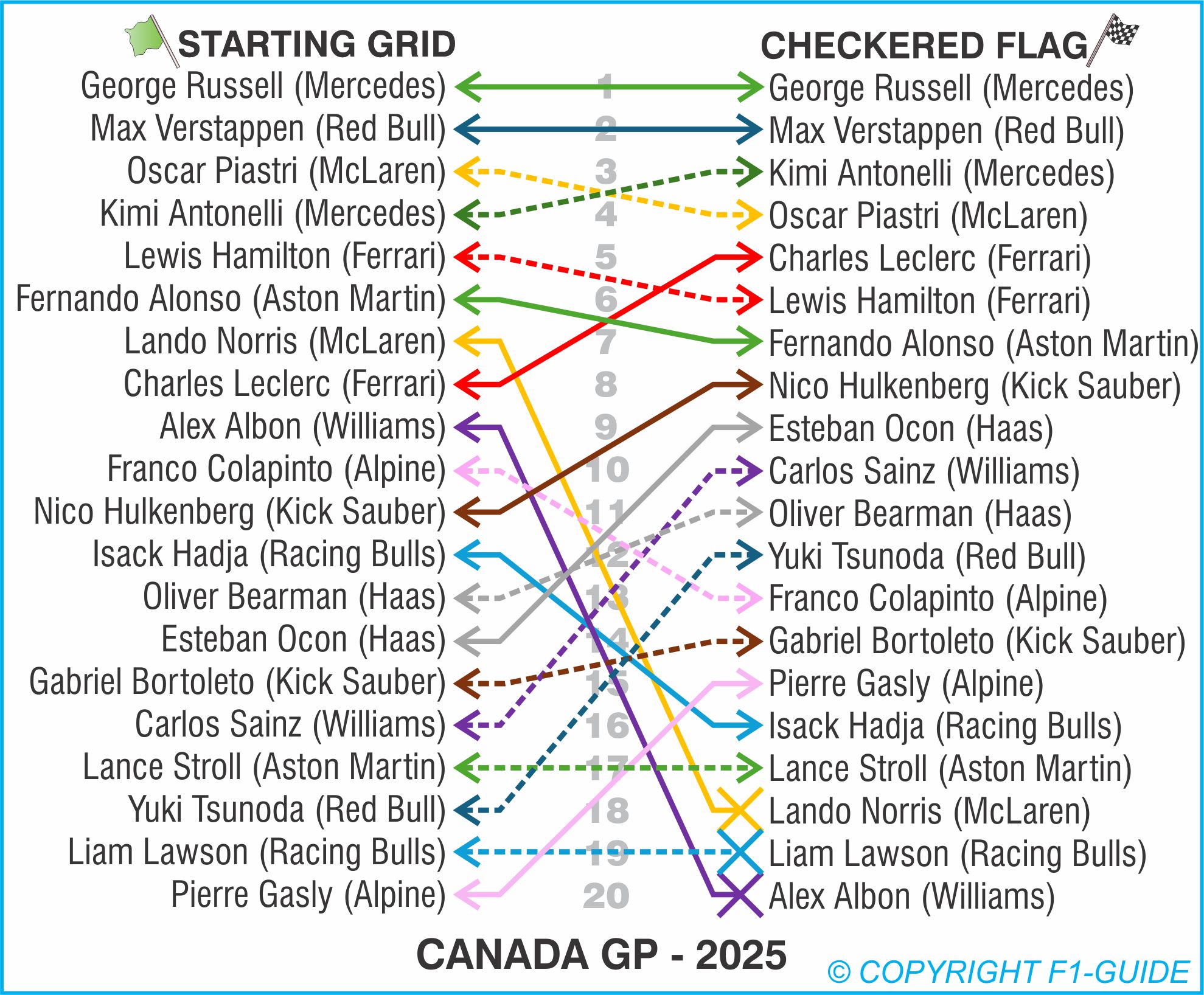
Starting Grid to Checkered Flag
The full lap chart
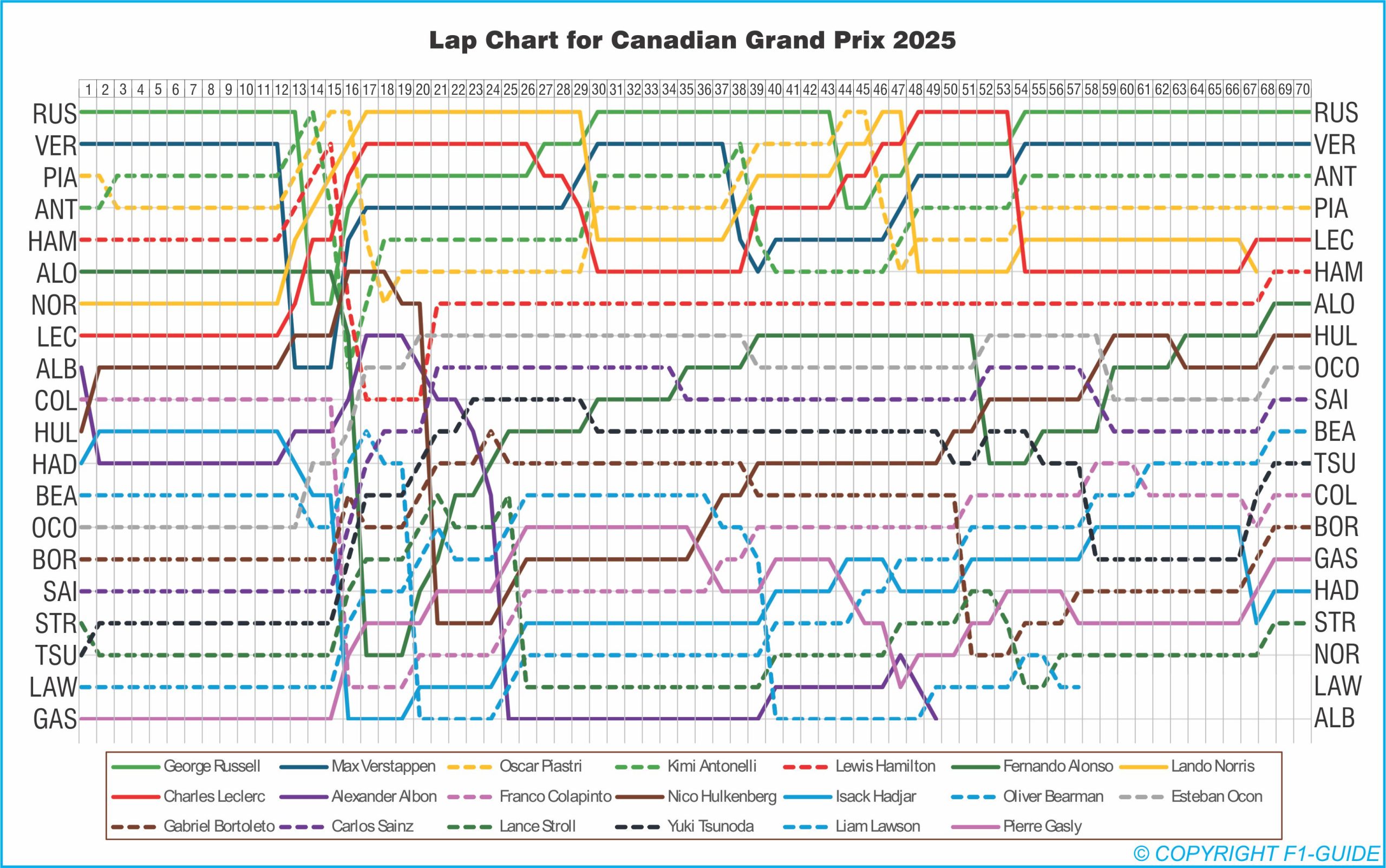
Lap Chart
After the results of this GP the World Drivers’ Championship points are
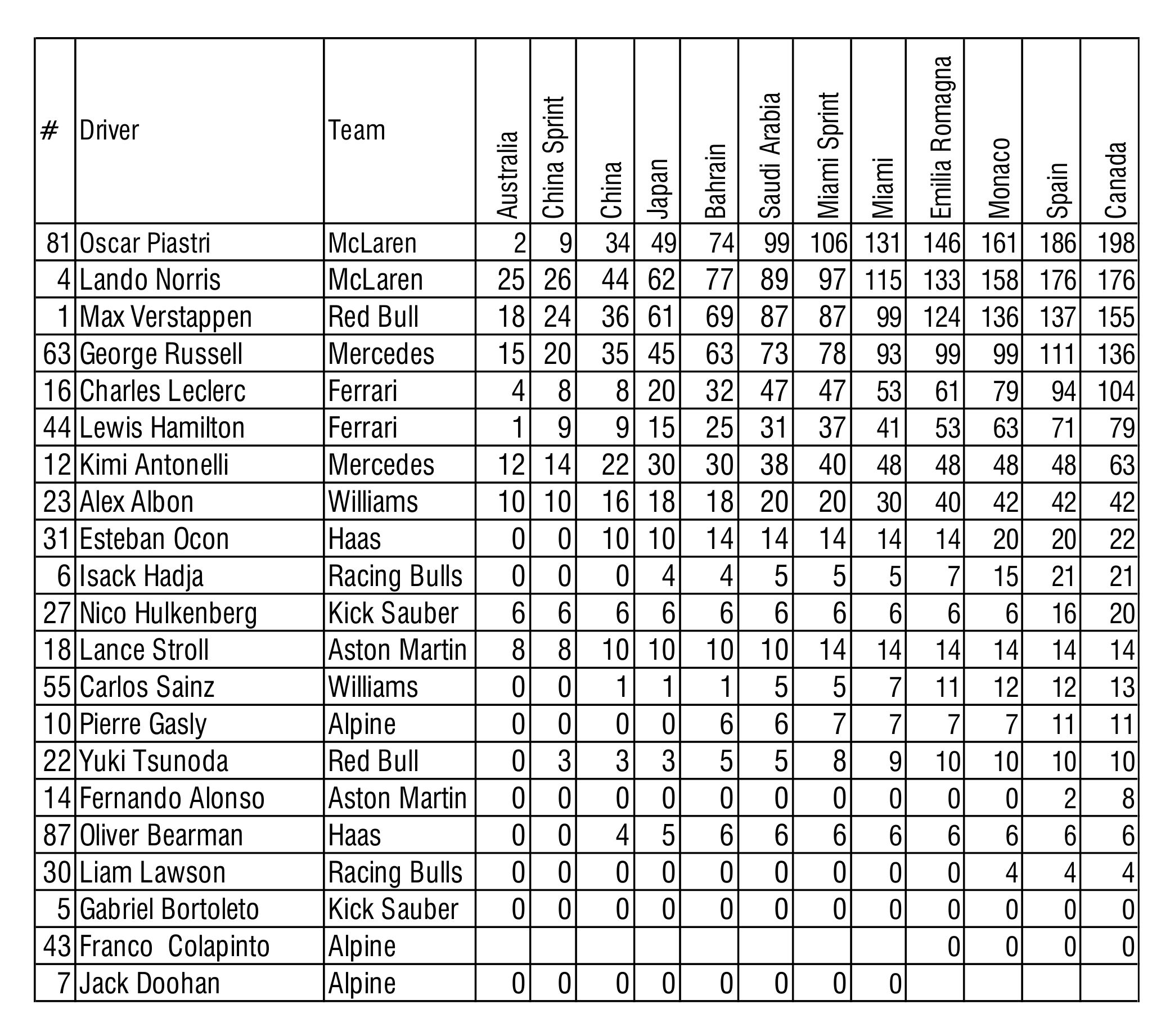
WDC Points
Graphically
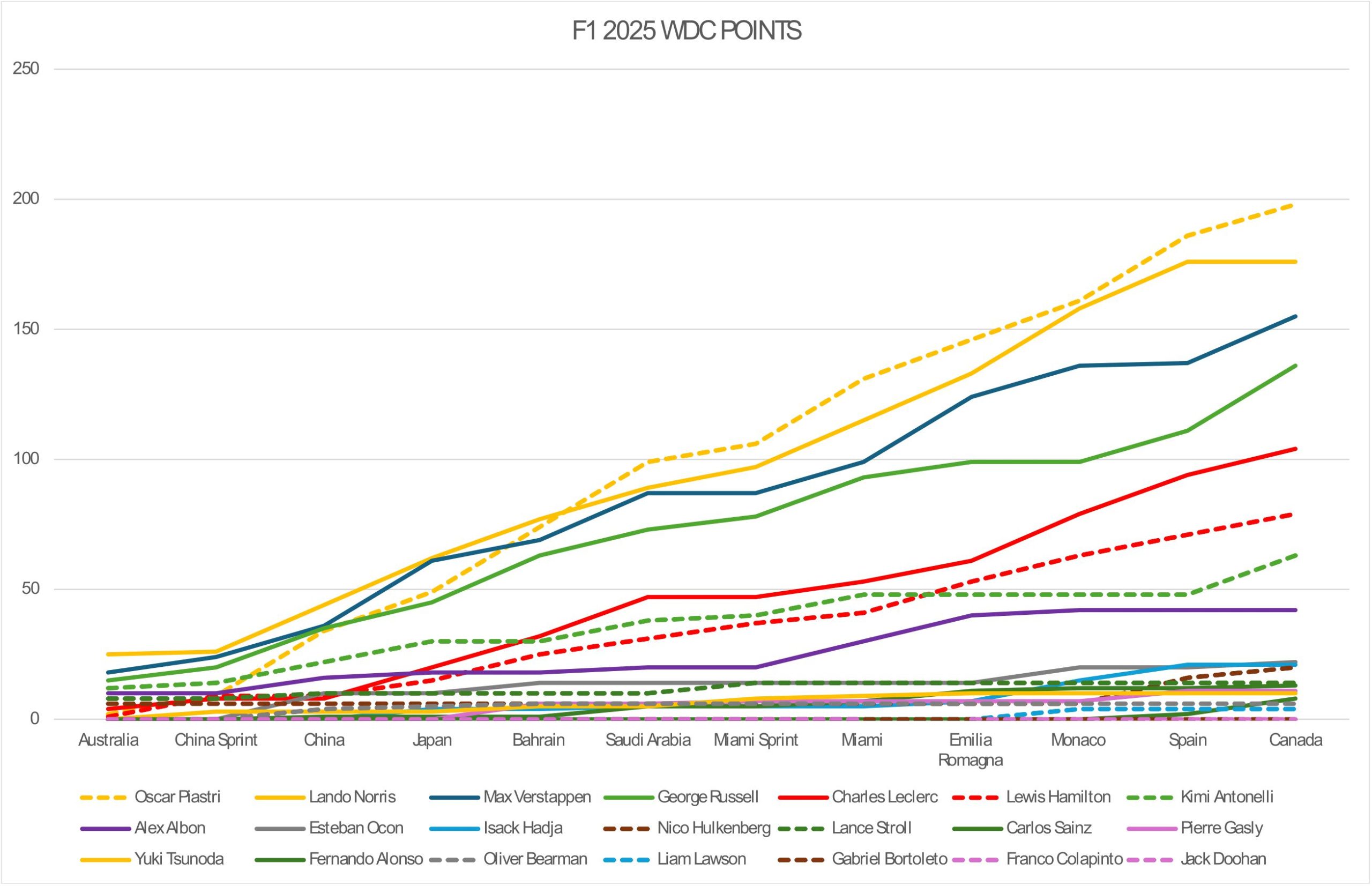
WDC Graph
The World Constructors’ Championship points and gaps are
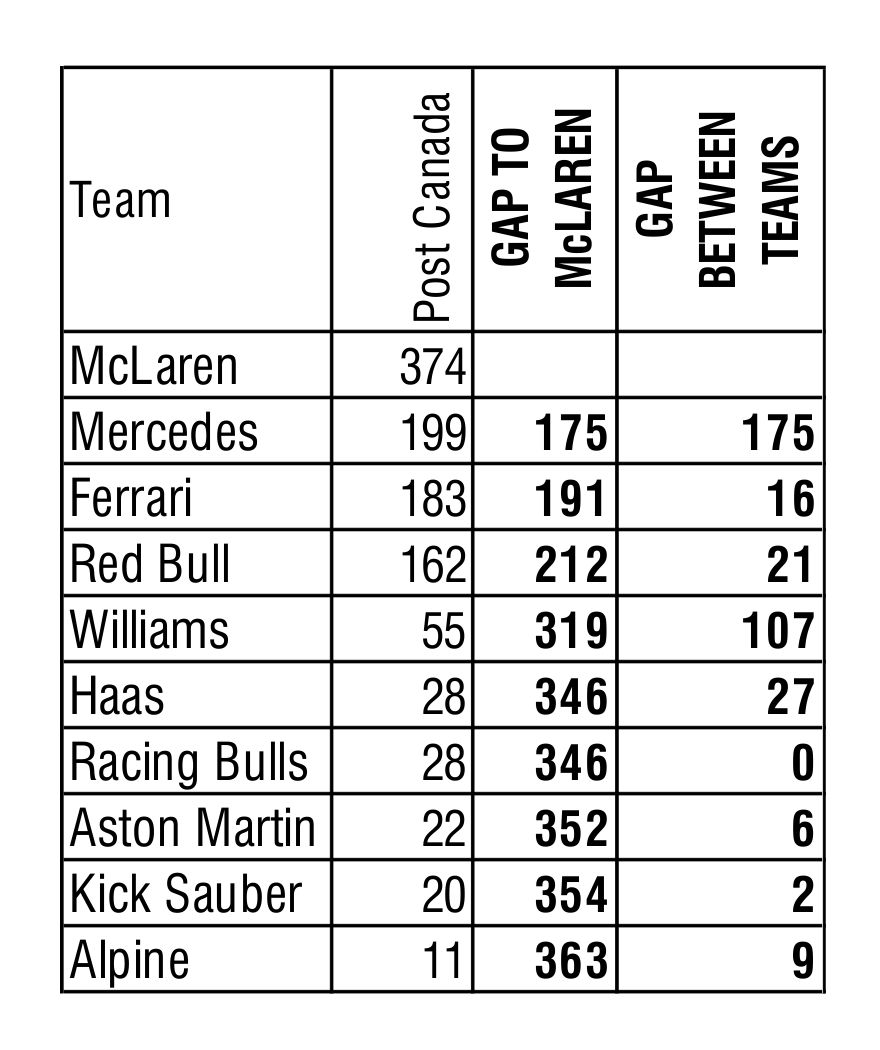
WCC Points Gap
Graphically
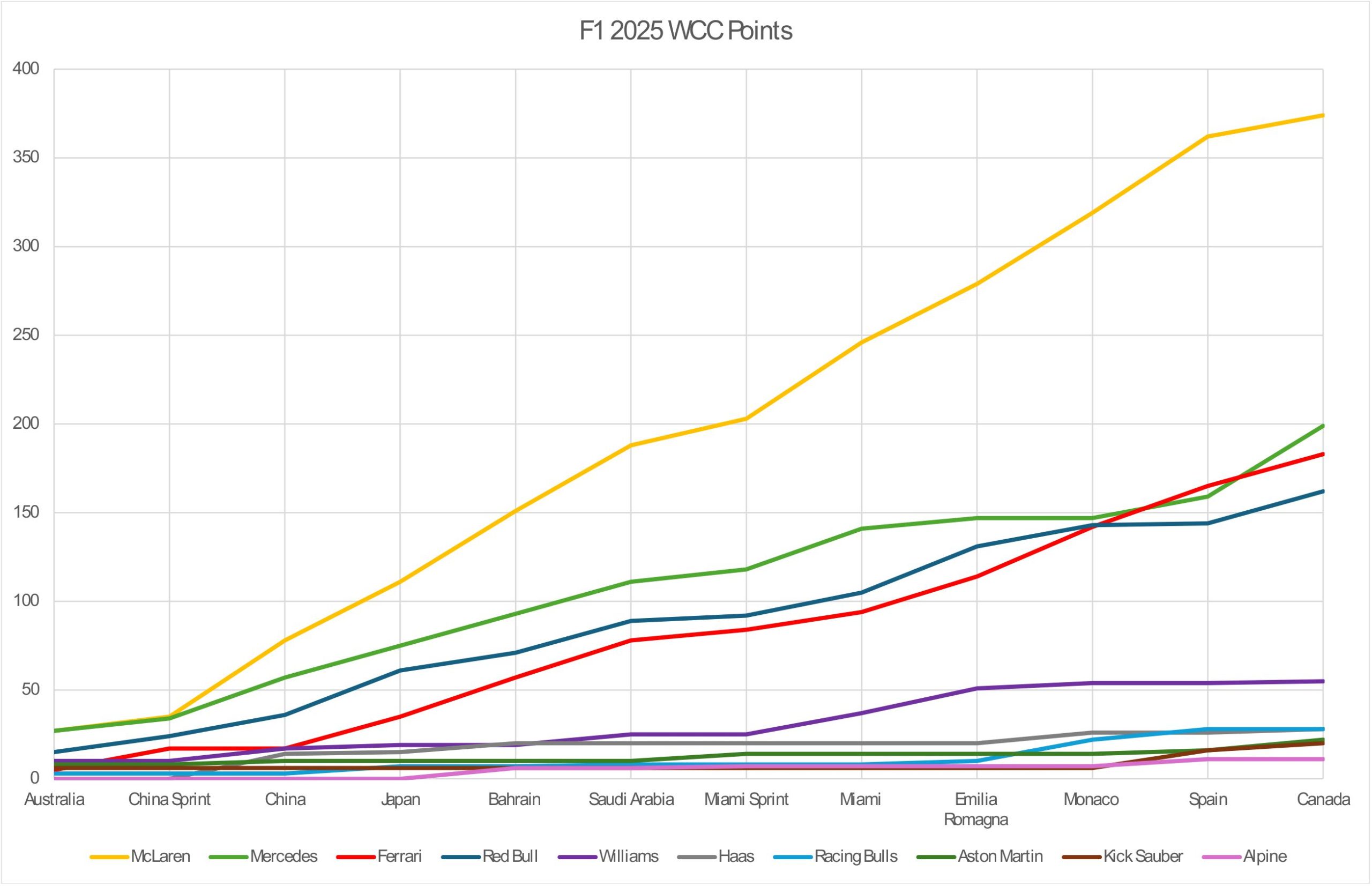
WCC Graph
Postscript:
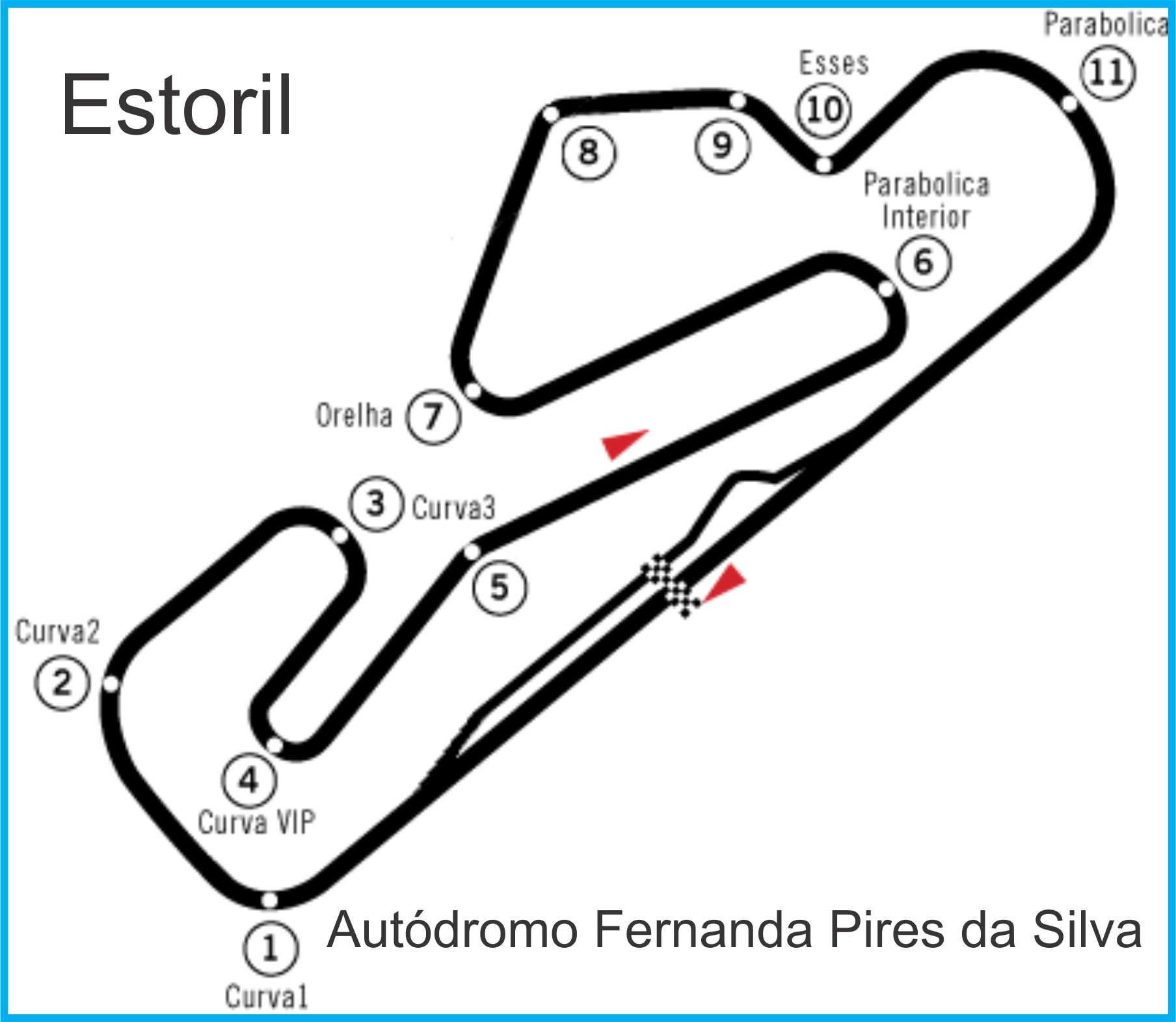
Estoril Grade 1 (F1) Circuit
I wish the Autódromo Fernanda Pires da Silva in Estoril; Portugal was still on the F1 calendar. Estoril was last used by F1 in 1996. It is still a grade one circuit. Estoril currently hosts a round of the World Superbike Championship, alongside other series.

